Florida Vacay - April 2019 - Kennedy Space Center
|
|
We spent the day at the Kennedy Space Center. I had been 25+ years ago and don't remember too much: looking up at the Vehicle Assembly Building (VAB), a mission control room with old computer consoles, a rusted launch pad maybe. I didn't realize at the time the Apollo moon landings were only 20 years in the past.
On this visit, they were 50 years ago! Just a year or so ago, I got really interested in the space programs of Mercury, Gemini and Apollo and read a number of books on them. So I knew a lot more on this visit.
All that said, the Kennedy Space Center of 2019 is completely different than what I remember. It has turned into a world-class museum, and I've been to a few. They've done an exceptional job with it. Of course, they do have a story to tell!
Here, the four of us are at the entrance to the Kennedy Space Center Visitor's Complex.
|
| |
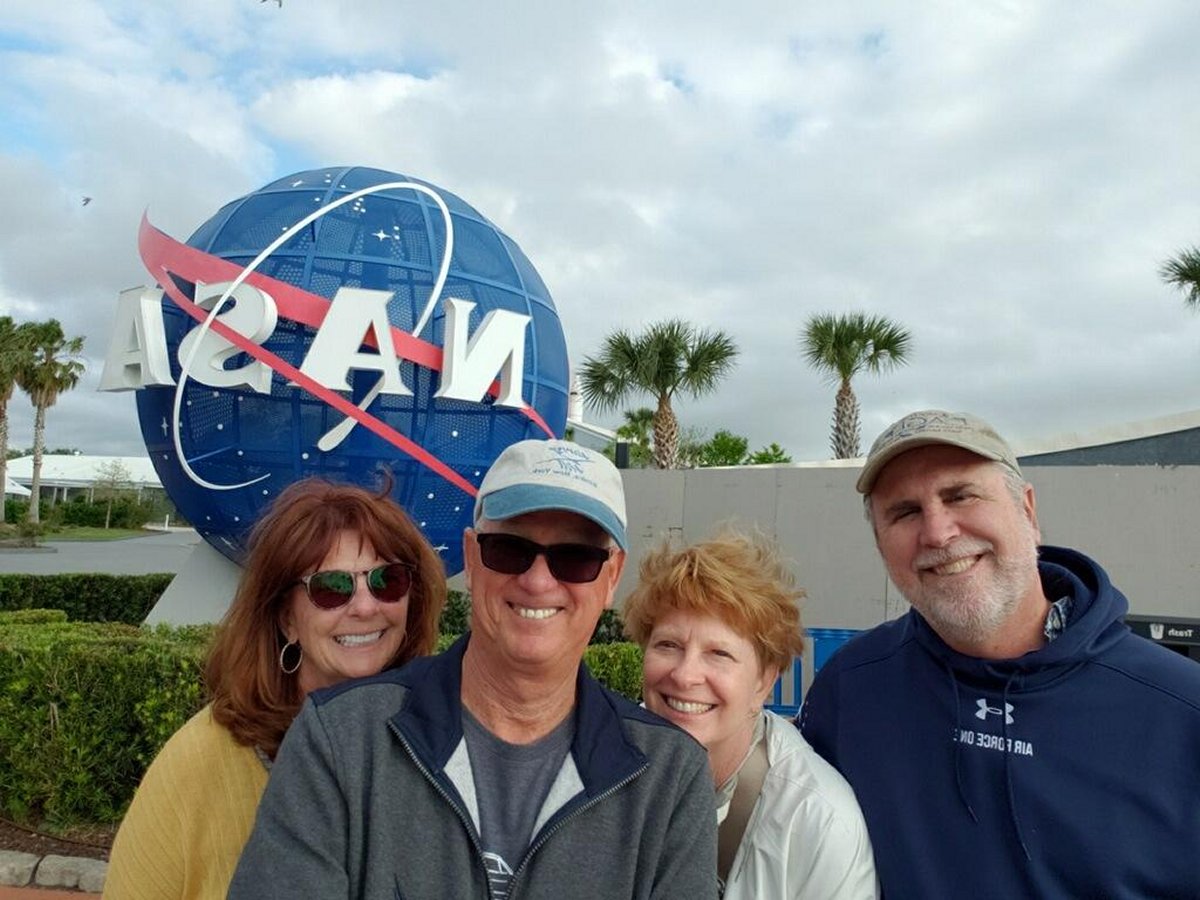 |
|
|
The place opens at 9AM. We got there around 10AM and had to stand in line a little while to buy tickets. Recommendation: buy your tickets online, and get there right at 9AM. There is a lot to see and it is a popular place.
The Rocket Garden in the background.
|
| |
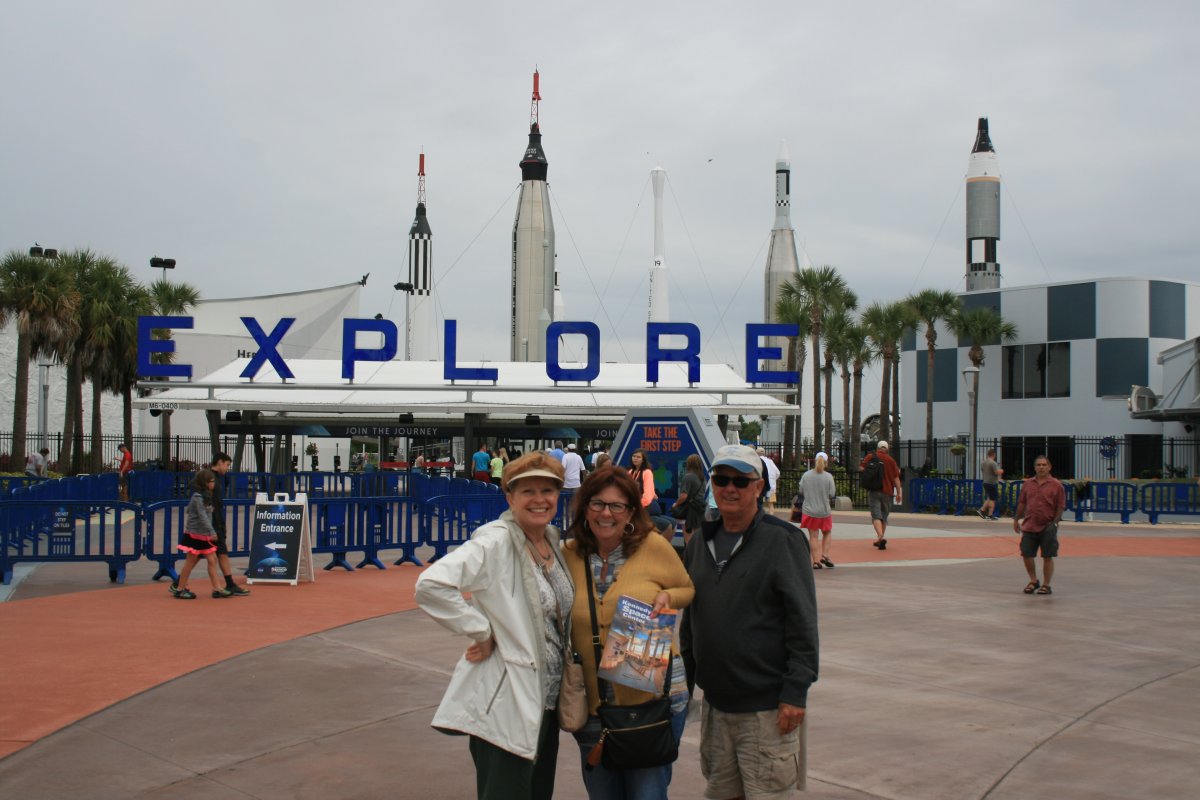 |
|
|
We walked through the Visitor's Complex to the area where you boarded the tourist buses. The tour bus takes you through the interesting sites of Kennedy Space Center complex. The comfortable bus has drop-down movie screens which show interesting video presentations on the area you are driving by. Plus, the driver fills in the space between videos with interesting comments and some comedy.
Here we are passing by a -- I think -- Redstone rocket like the one which the first American -- Al Shepard -- into space as part of the Mercury program.
|
| |
 |
|
|
This is the massive Vehicle Aseembly Building (VAB) where they assembled the Apollo Saturn 5 and Shuttle rockets.
|
| |
 |
|
| One side of the building had the massive doors open. |
| |
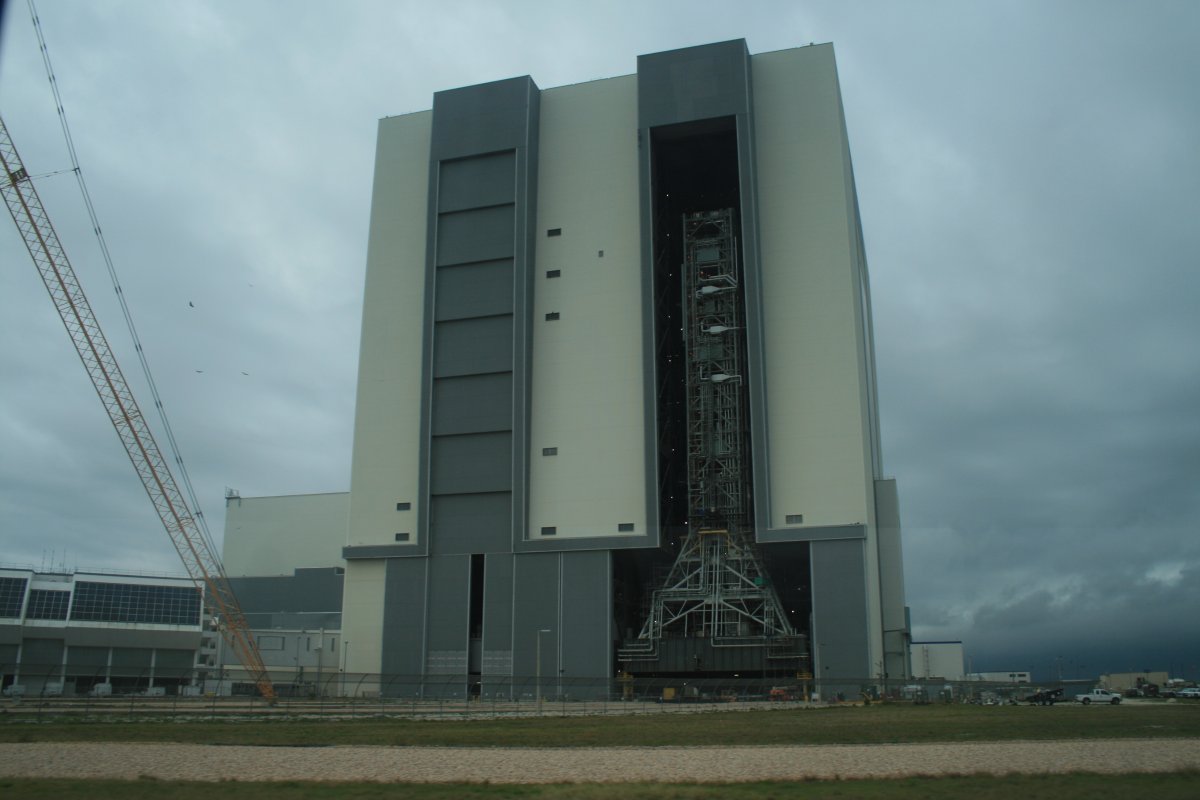 |
|
| One of the massive "crawlers" on which the rockets and transported from the VAB to the 39A or 39B launch pads. |
| |
 |
|
| Passing by Pad 39A where all the Apollo missions were launched from and many Shuttle ones. Now, Elon Musk's SpaceX company is leasing it and using it for the Falcon Heavy launches. They launched one the week after we visited. |
| |
 |
|
|
Another look at Pad 39A and the SpaceX equipment.
|
| |
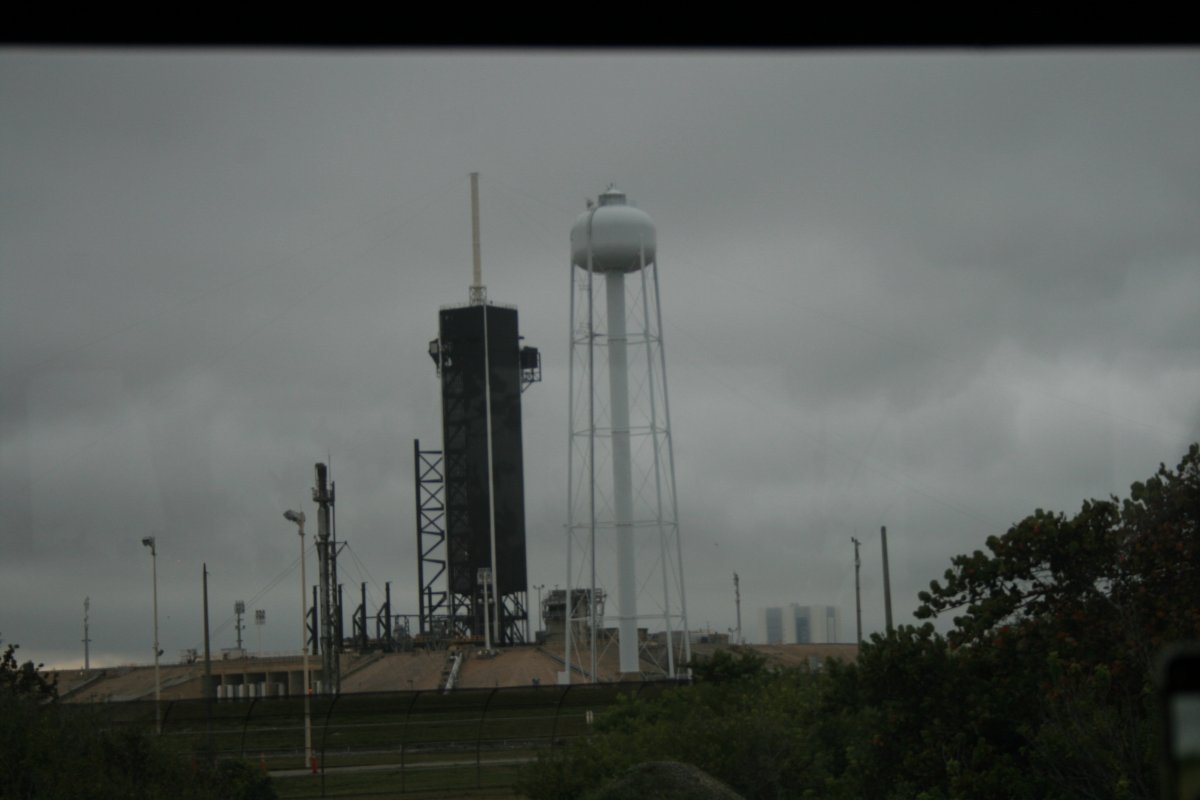 |
|
|
This is Pad 39B where they also launched Shuttle missions from. Pad 39B will be used for the Space Launch System (SLS) launches, which are for rockets more powerful than the Saturn Five was, and will take America back to the Moon and Mars.
|
| |
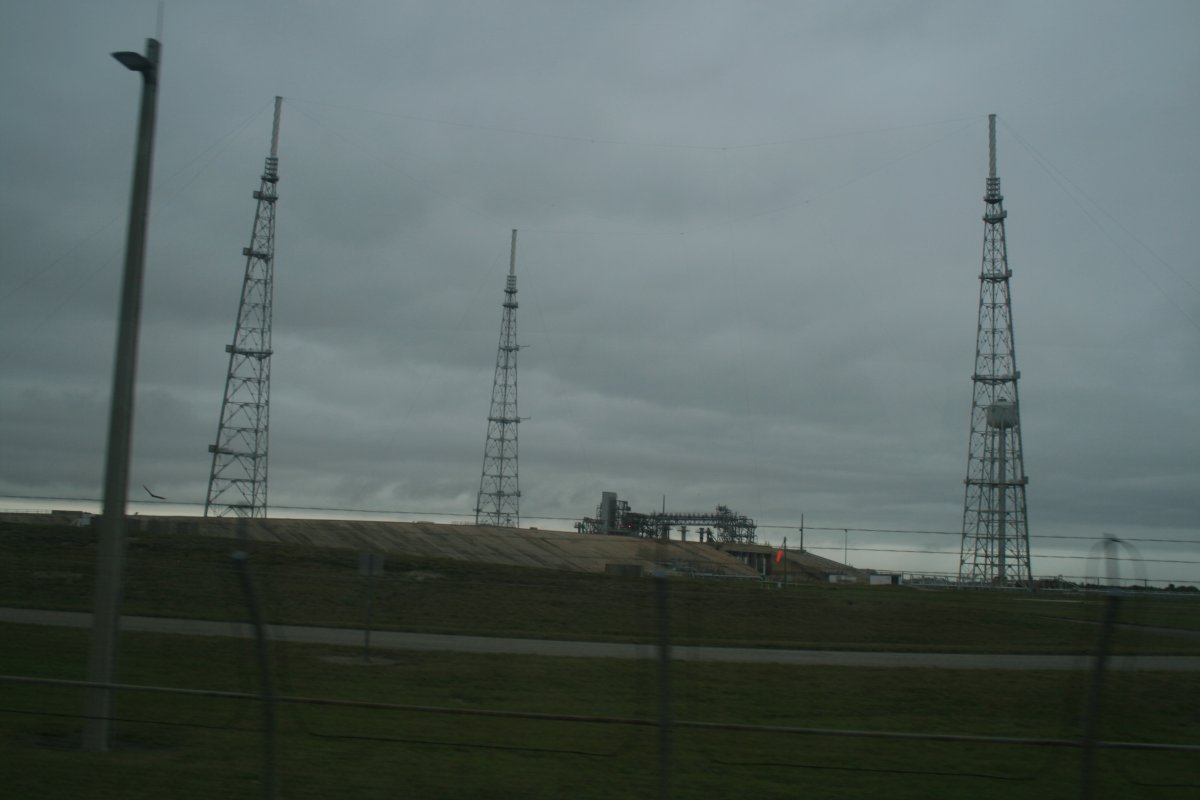 |
|
| The gravel road way used by the Crawler on its journey from the VAB to pads 39A and 39B. |
| |
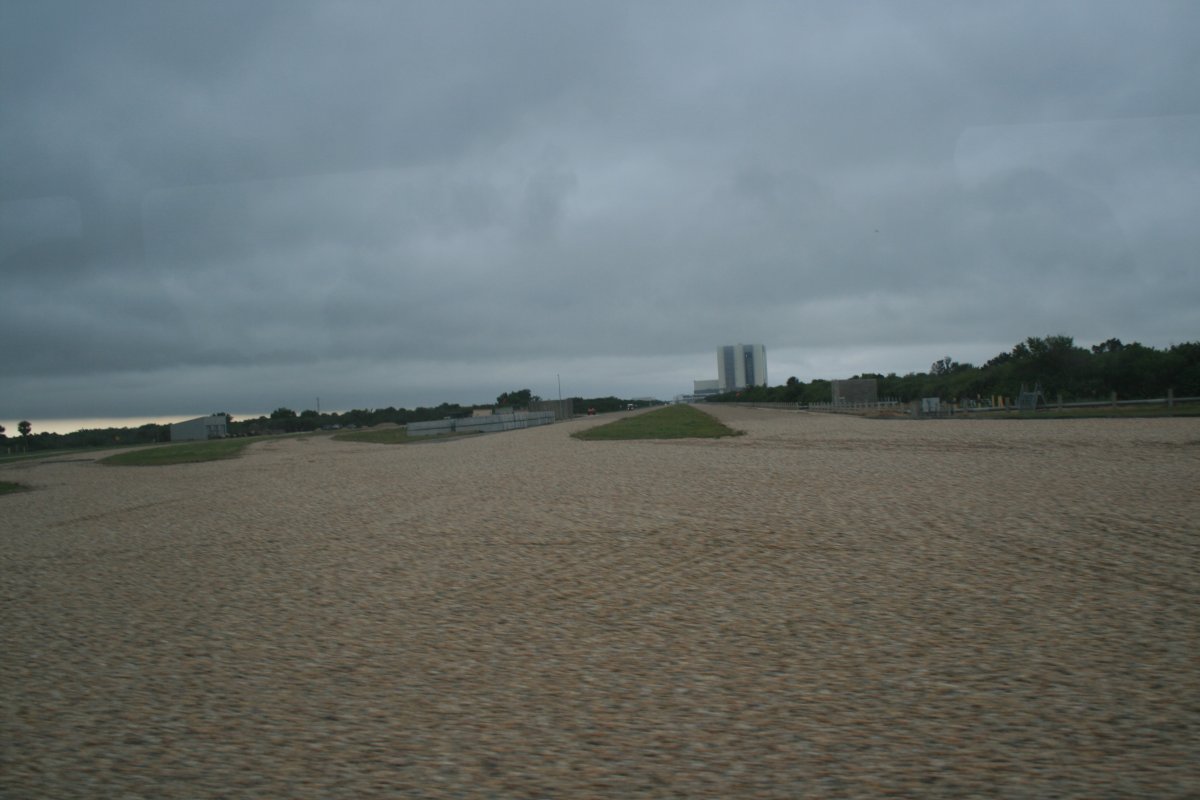 |
|
| Back at the VAB, notice the launch control building to the left with windows facing the launch pads. |
| |
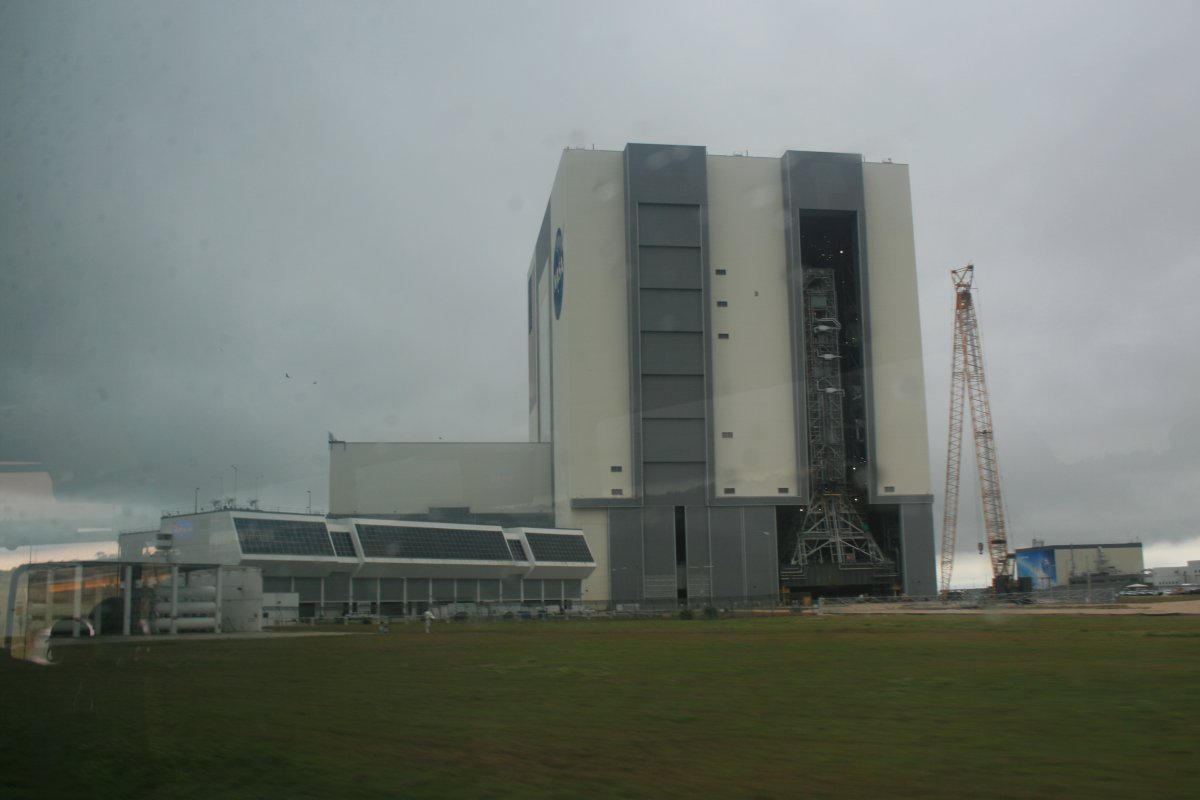 |
|
|
The tour bus dropped us off at the Apollo/Saturn V Center which is off by itself, away from the Visitor's Complex. We ended up spending a couple of hours there. You start off in the Firing Room Theater pictured here. Very well done. These are the actual launch consoles used for Apollo.
|
| |
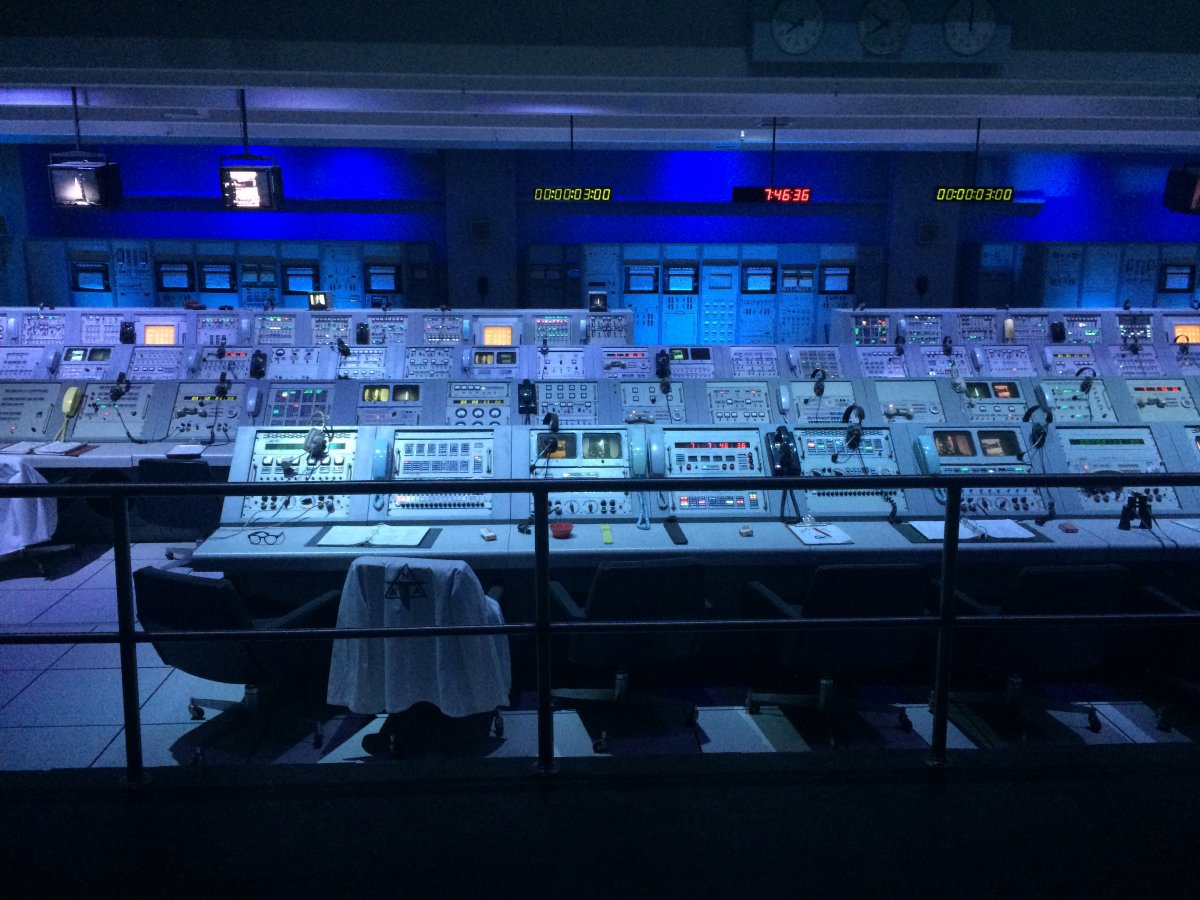 |
|
Then we walked into the main area and there it was! The Saturn V rocket. In mint condition and as large as a Navy destroyer. I had no idea it was now displayed inside a building. The Kennedy Space Center had totally redeemed itself! |
| |
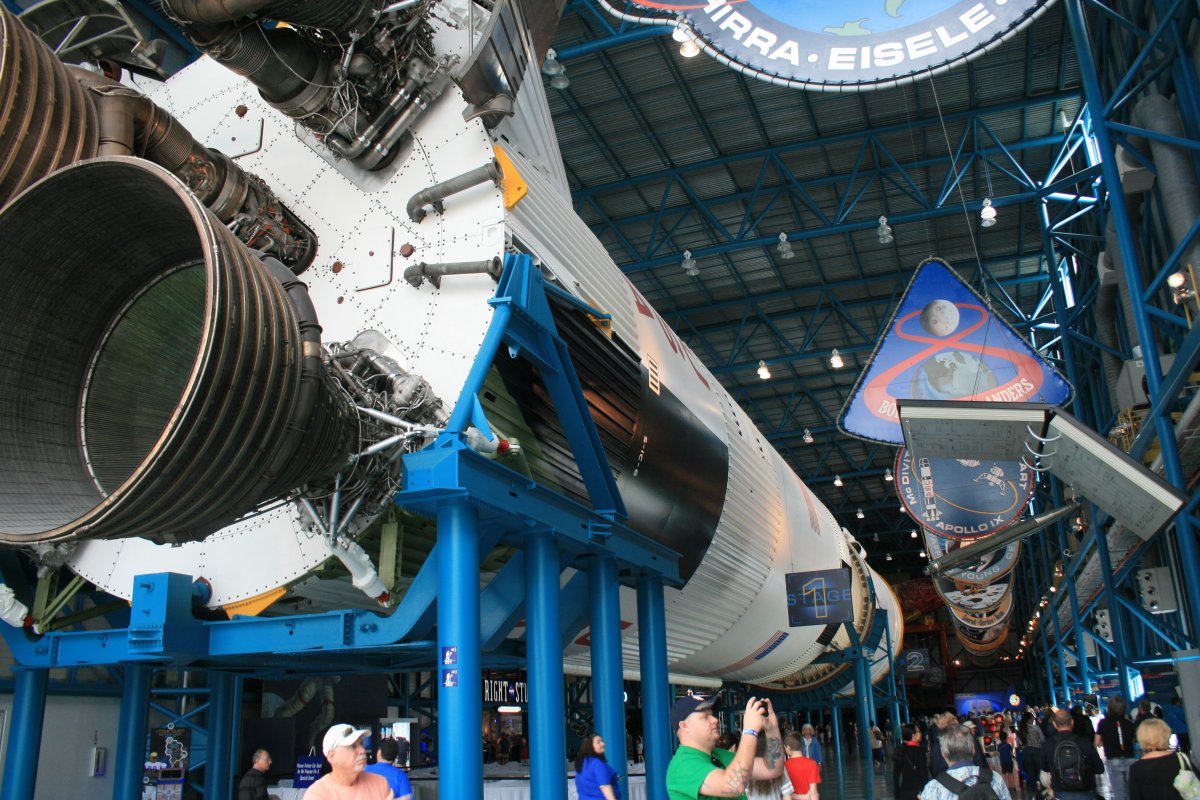 |
|
|
The real Saturn V was so big, and they had it separated into sections, so you could see the front and back (engines) of each section, that you could not take a picture of the rocket.
But they had this large model to look at. On this side you can see the outside skin.
|
| |
 |
|
|
And on this side the skin is clear so you can see the insides.
|
| |
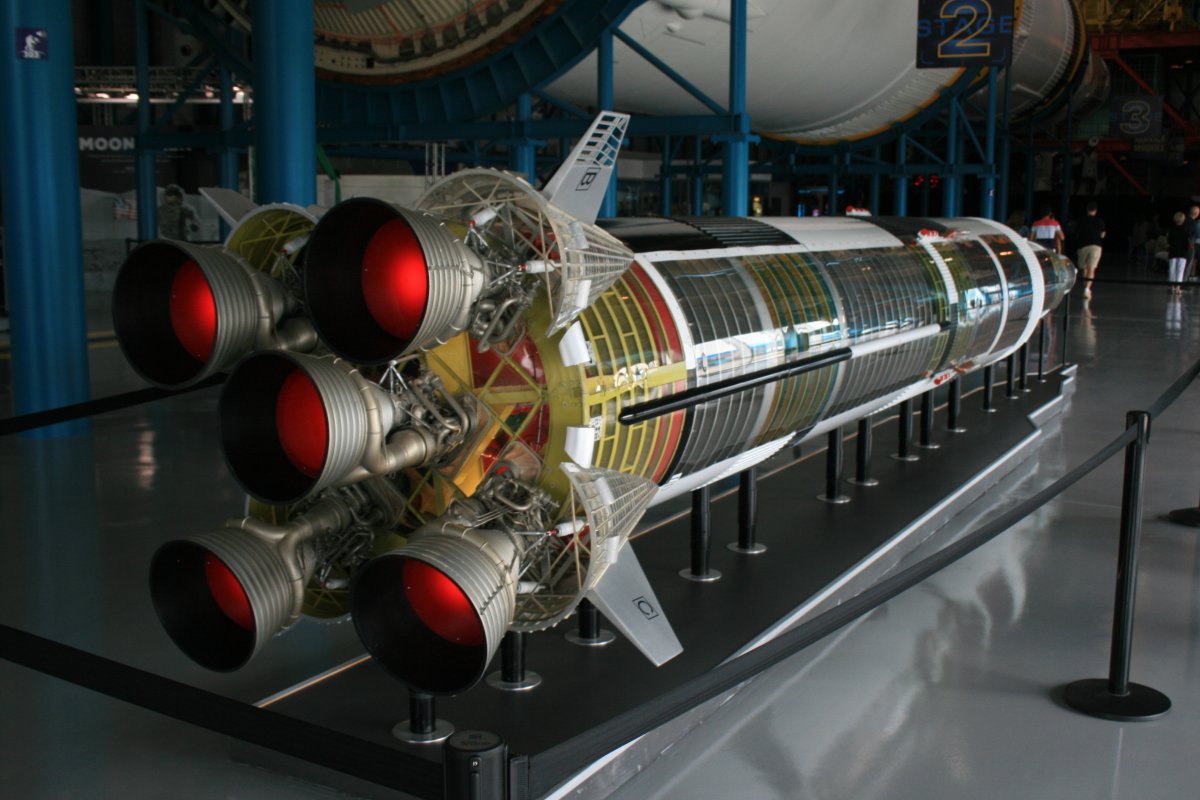 |
|
| Looking at the inside of Stage One with the five F-1 engines, the red RP-1 fuel tank and the green liquid oxygen tank. Mix RP-1 and liquid oxygen and it goes boom! |
| |
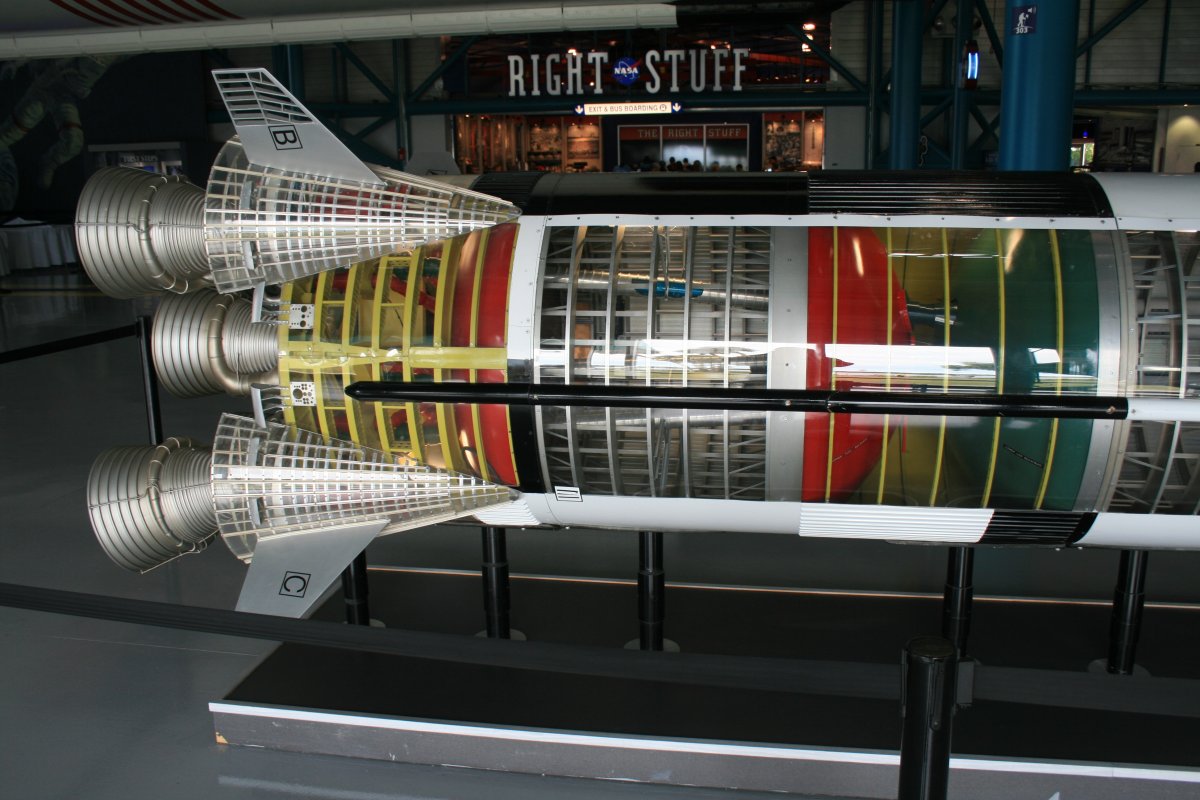 |
|
| The third stage, at the pointy end of the rocket, containing the Lunar Module, Service Module and Command Module. |
| |
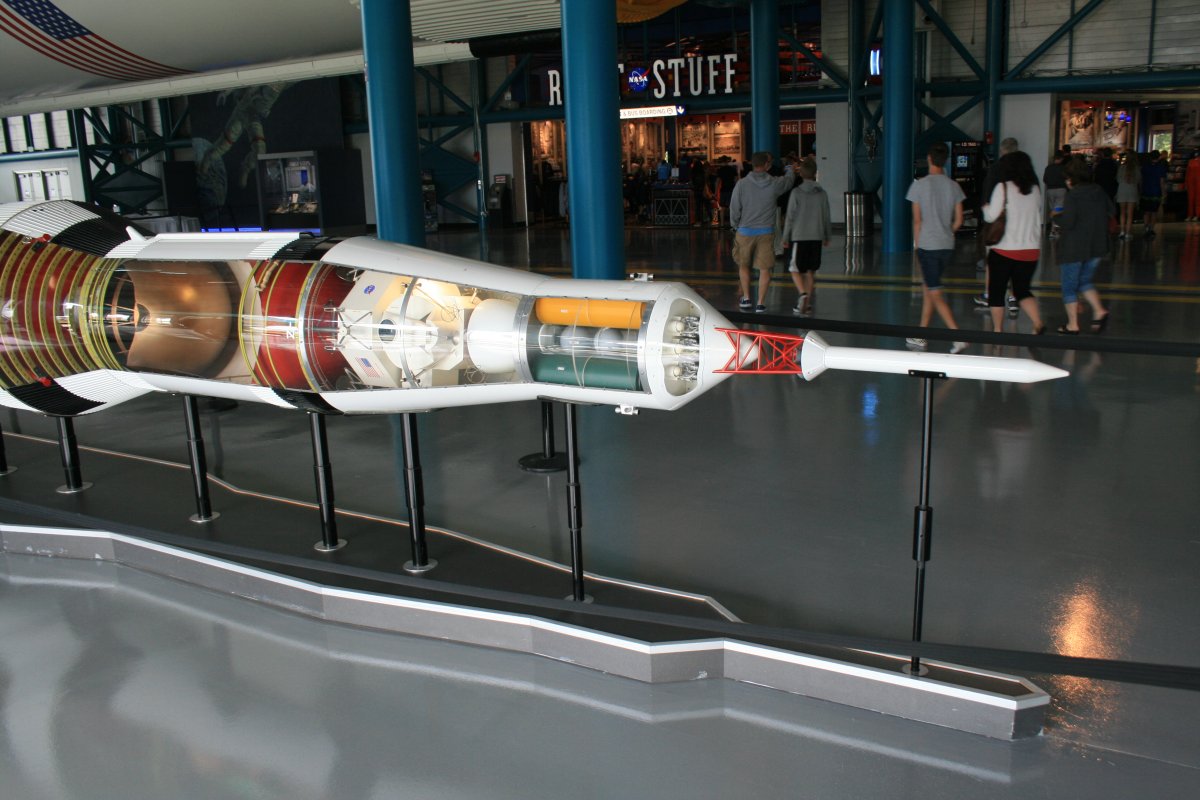 |
|
|
The five big F-1 engines. Can you believe they burned through their fuel in only 168 seconds?
|
| |
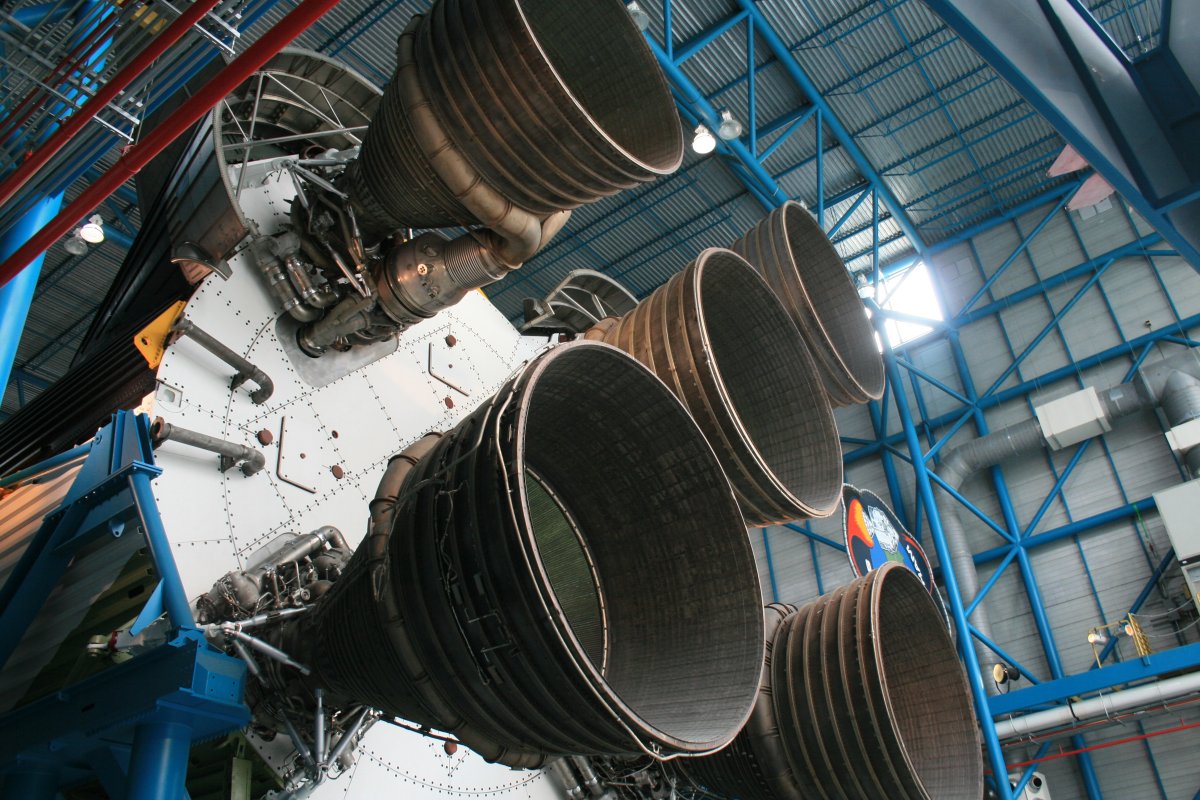 |
|
| From another angle. The center engine is fixed, while the four outer engines are turned hydraulically (gimballed) to steer the rocket. |
| |
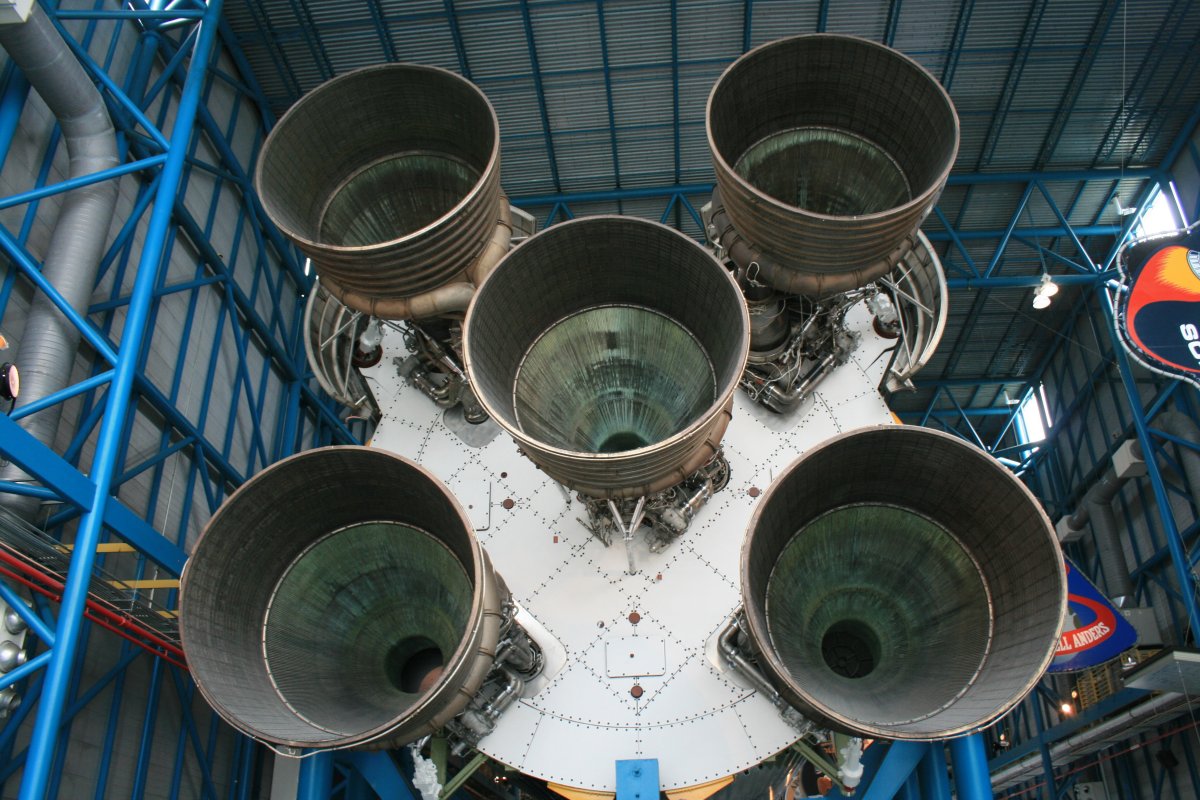 |
|
| A close up of one of the F-1 engines. They were ultra-reliable. |
| |
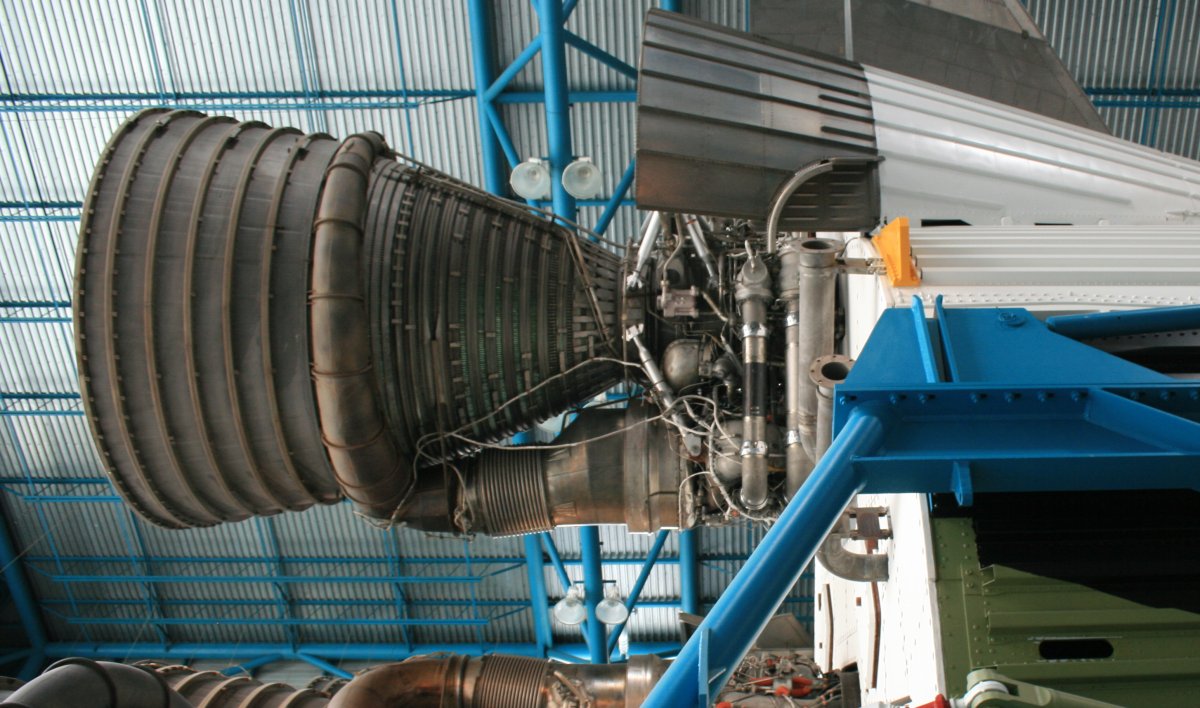 |
|
|
The five J-2 engines of the second stage.
|
| |
 |
|
| This third stage had a single J-2 engine, the same type as the second stage. |
| |
 |
|
|
Looking back at the third, second and first stages.
|
| |
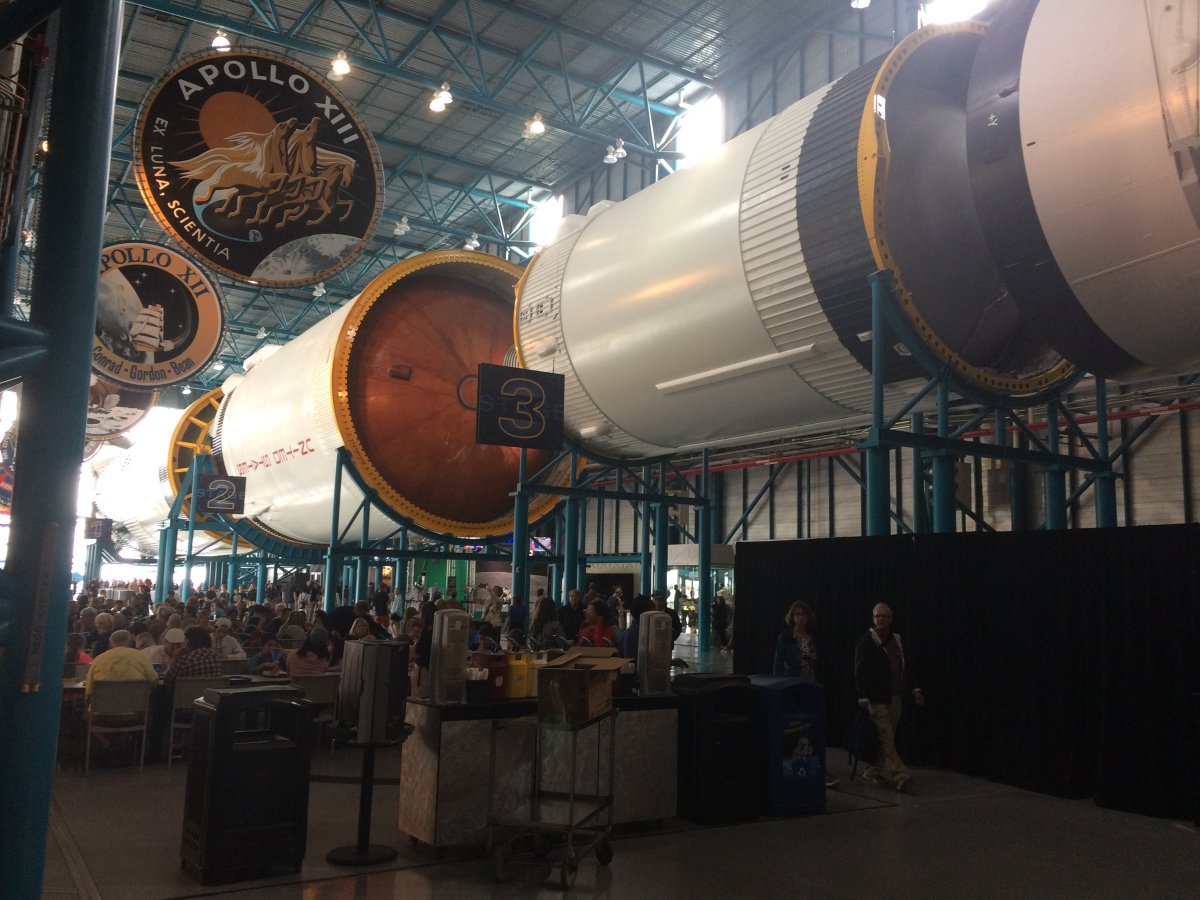 |
|
| The Service Moduel to the left and the Command Module. |
| |
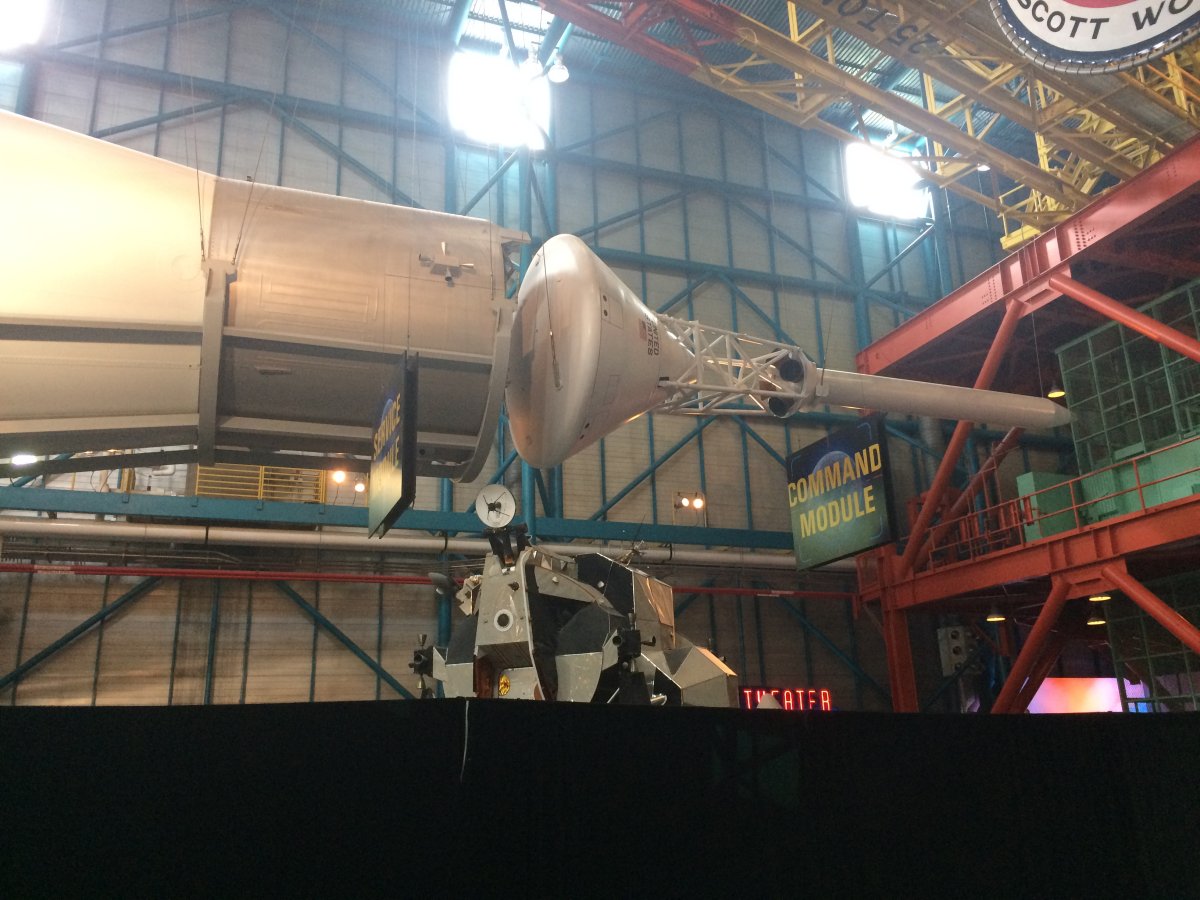 |
|
|
The Command and Service module.
|
| |
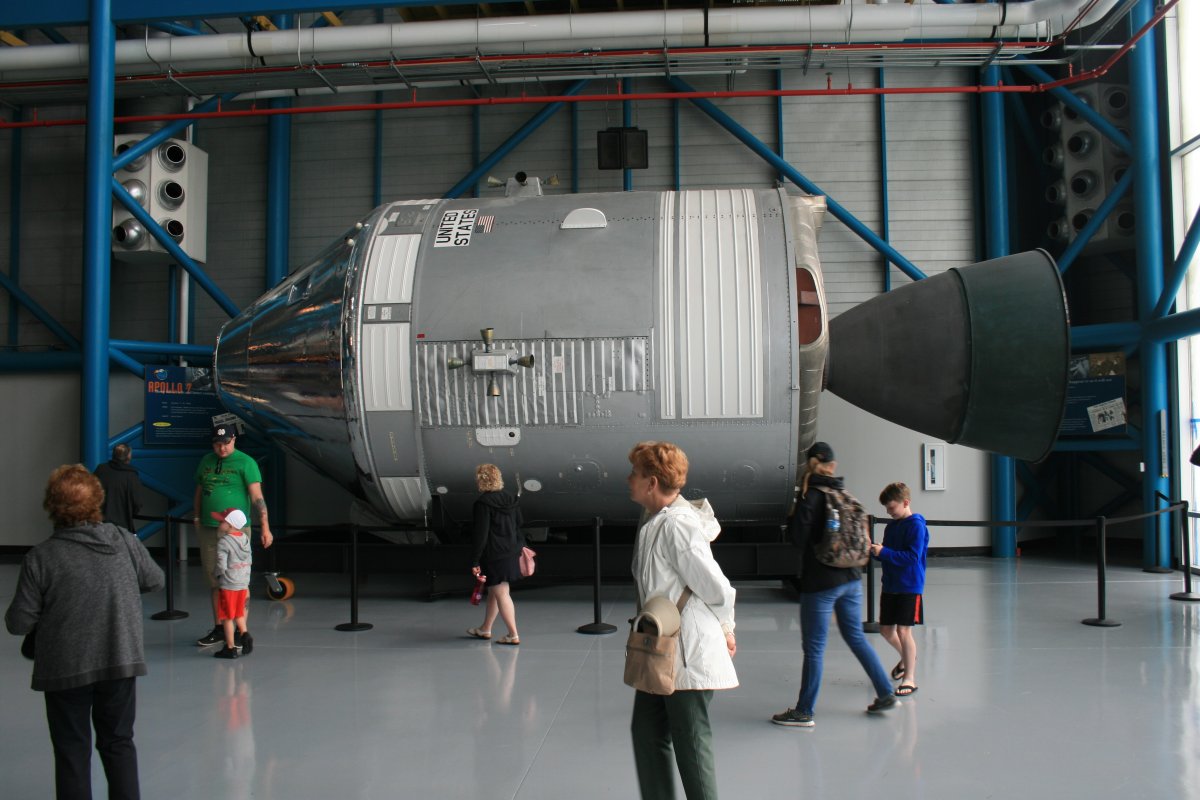 |
|
| A Lunar Rover like the ones carried on the Lunar Module and driven on the moon. |
| |
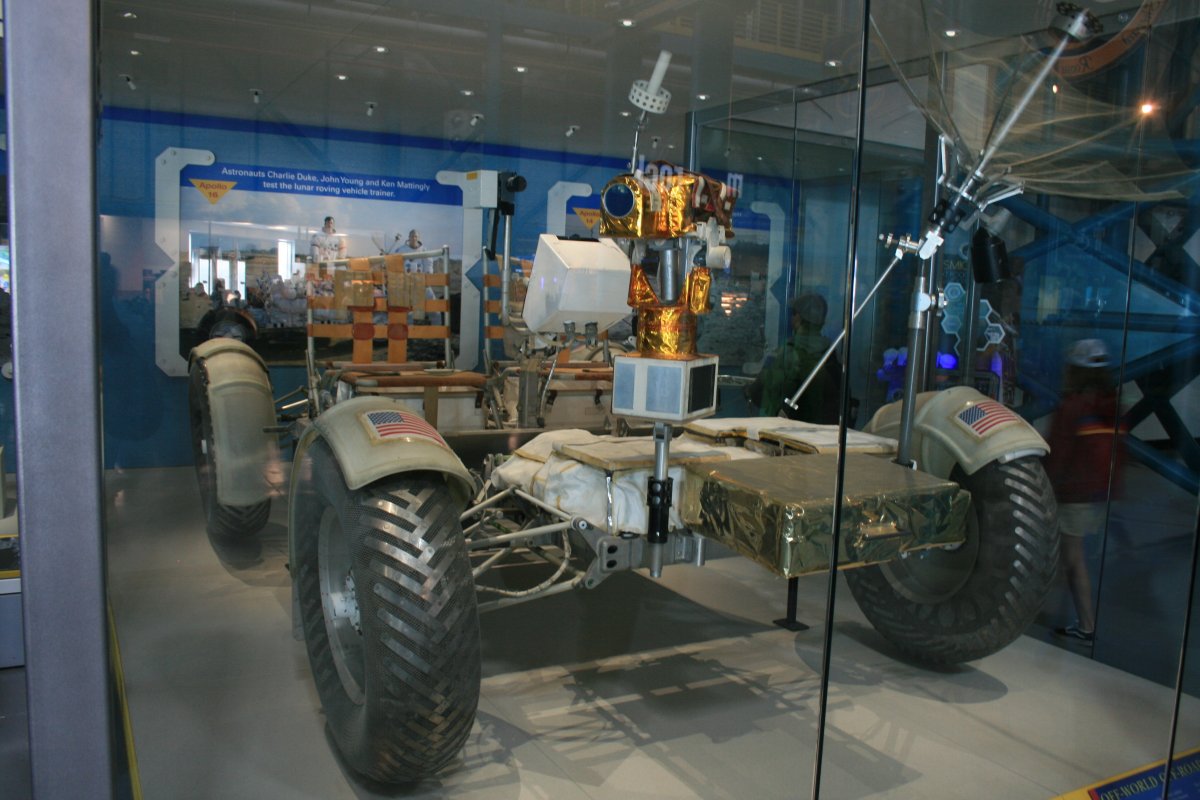 |
|
| The inside of the Lunar Module. The two astronauts piloted it standing up. Notice the triangular windows to the left and right of the upper center console. |
| |
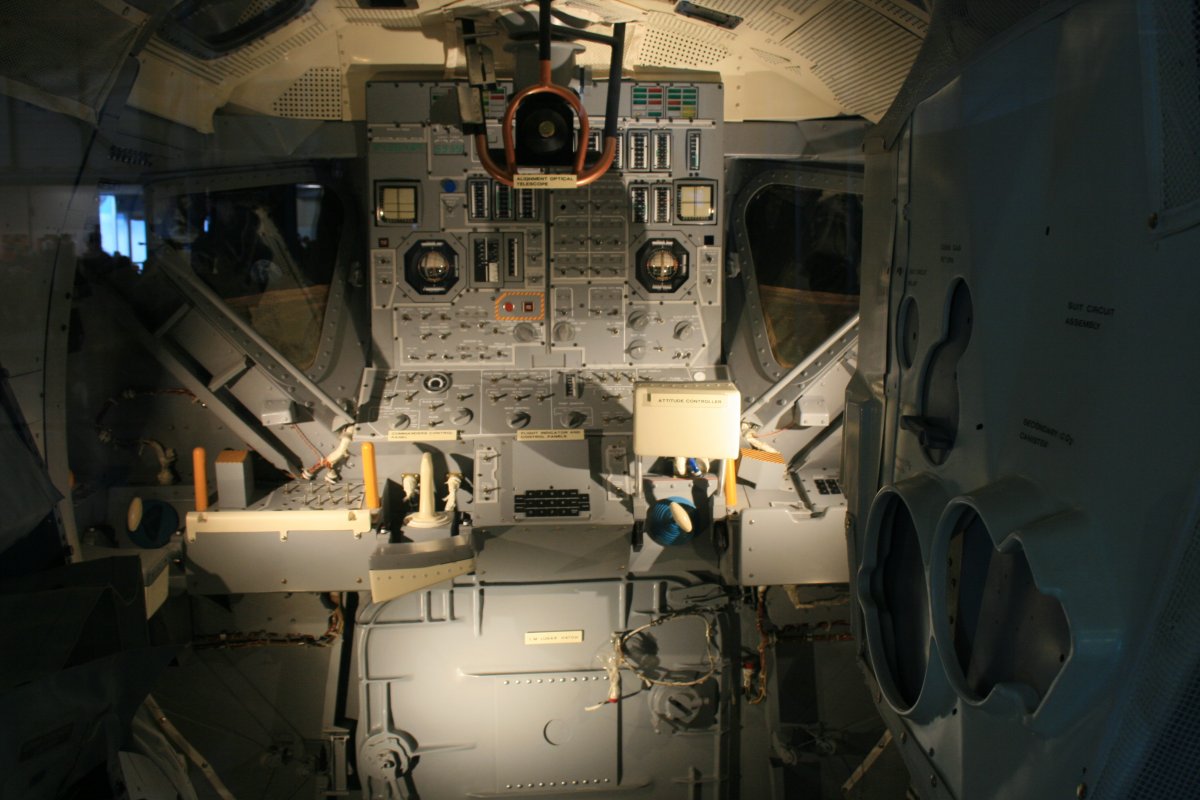 |
|
| I'm touching an actual moon rock! |
| |
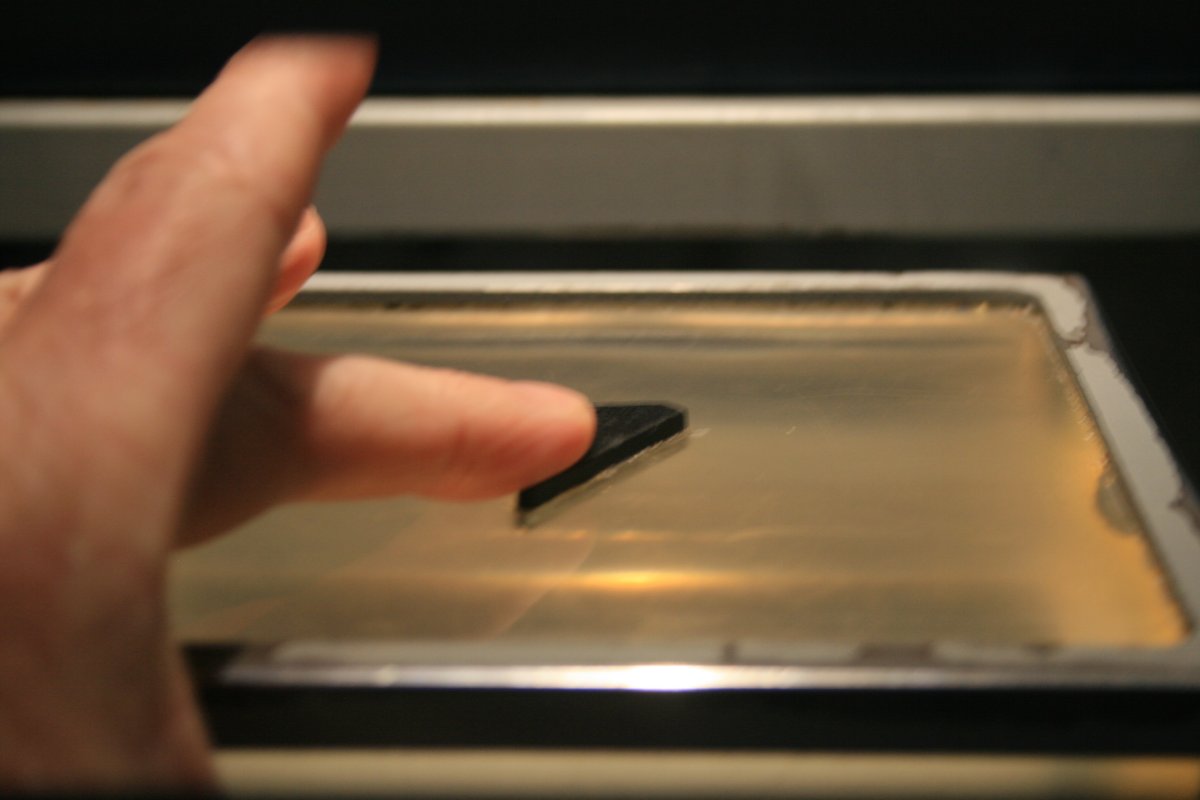 |
|
|
We watched the re-creation of the first moon landing, Apollo 11, in the Lunar Theater which really captured the tenseness and how close they came to running out of fuel before Neil Armstrong landed the Lunar Module. That exited into a room full of Apollo artificats, like this suit that Jim Lovell actually wore on Apollo 13.
|
| |
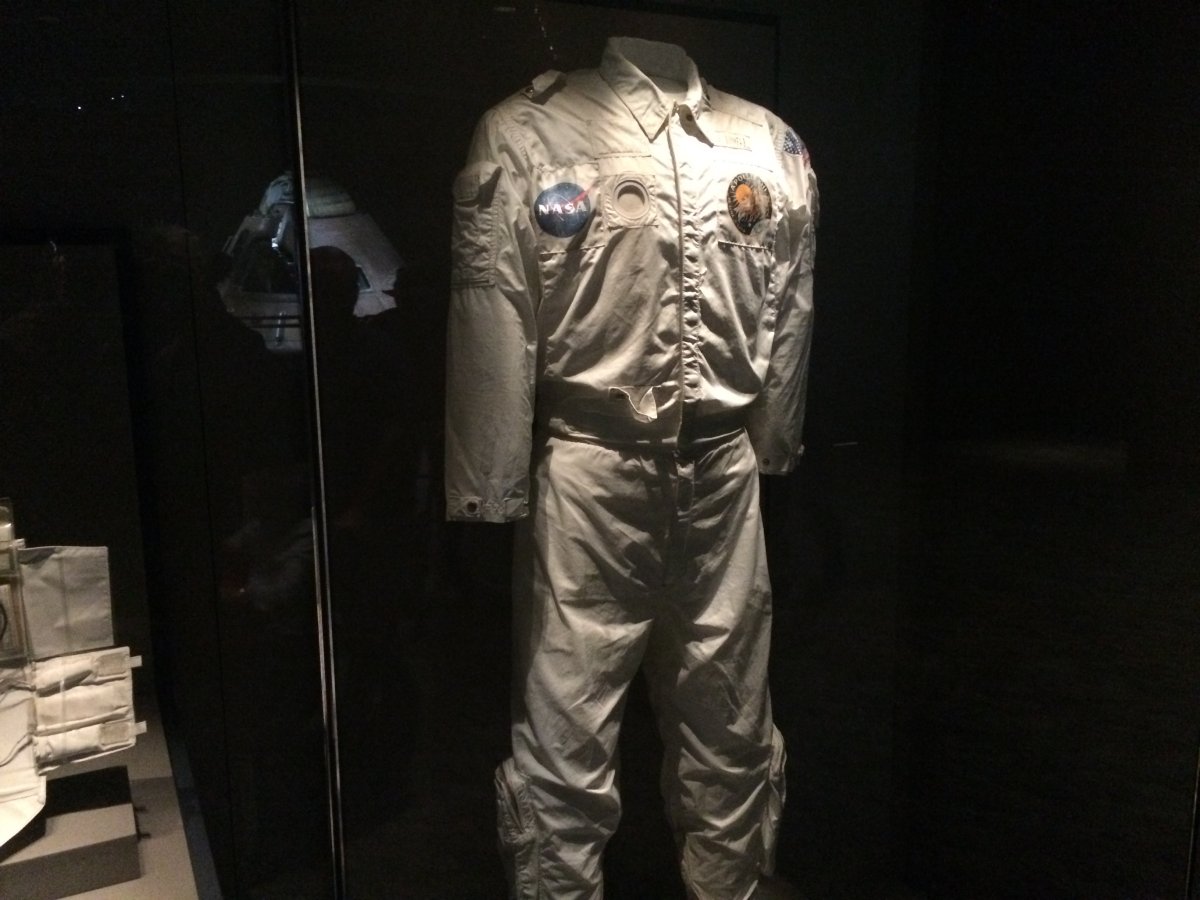 |
|
| This video camera was built especailly for the Apolllo missions and was very high-tech at that time. Today, your smart phone probably takes better video! |
| |
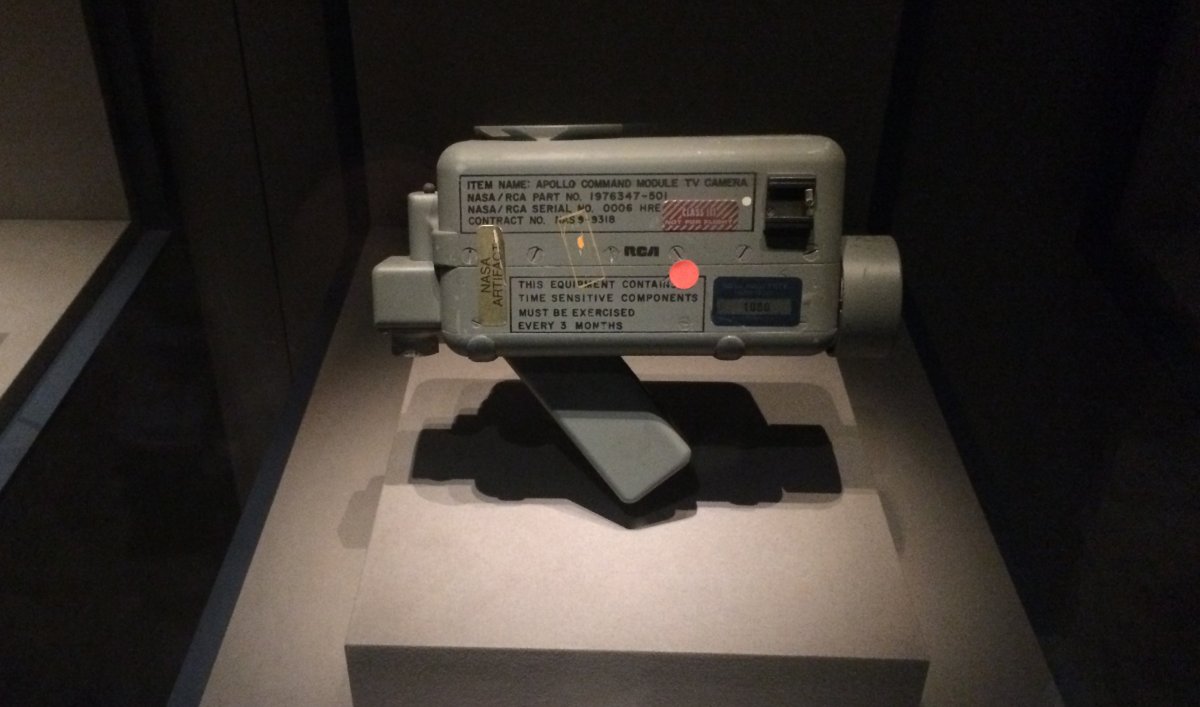 |
|
| The spacesuit Al Shepard wore on the moon on Apollo 14, complete with moon dust! |
| |
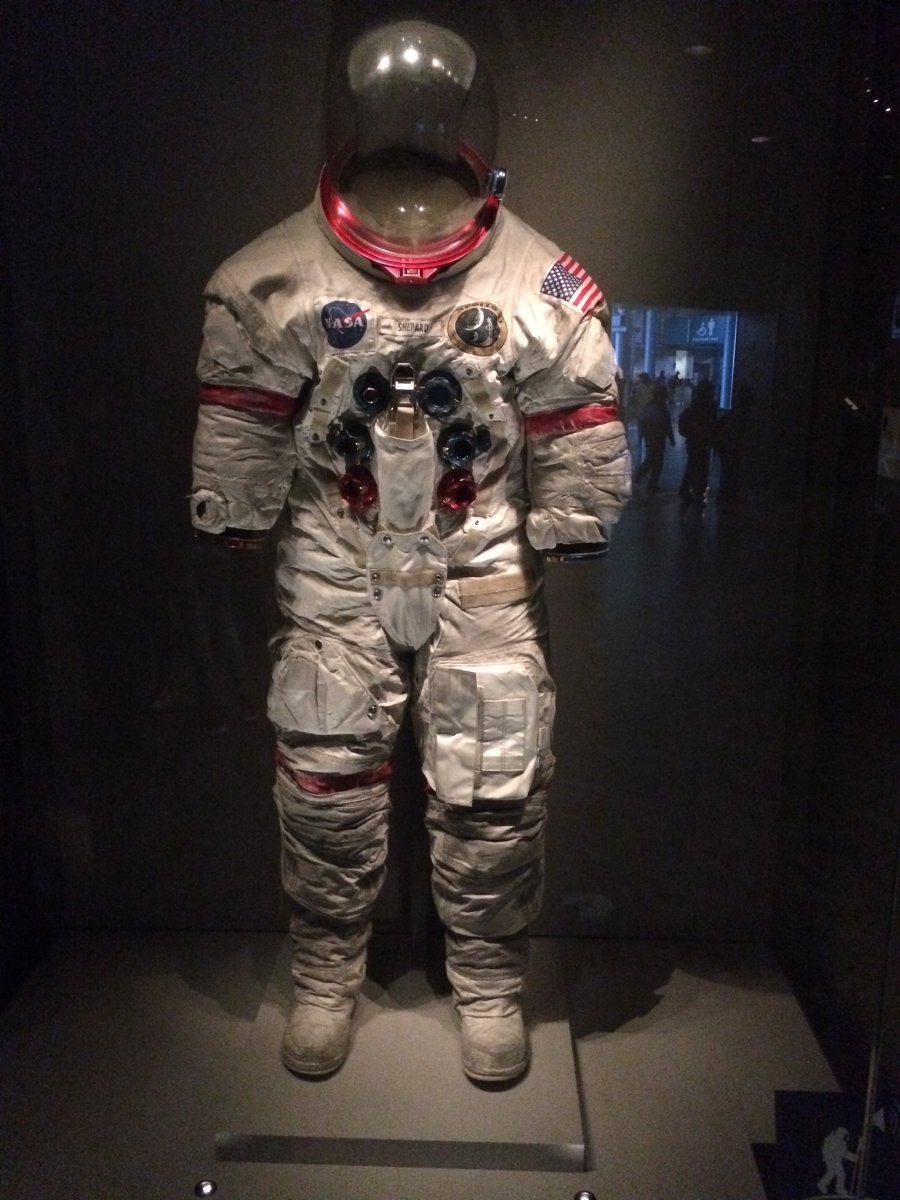 |
|
|
The Apollo 14 Command Module named "Kitty Hawk".
|
| |
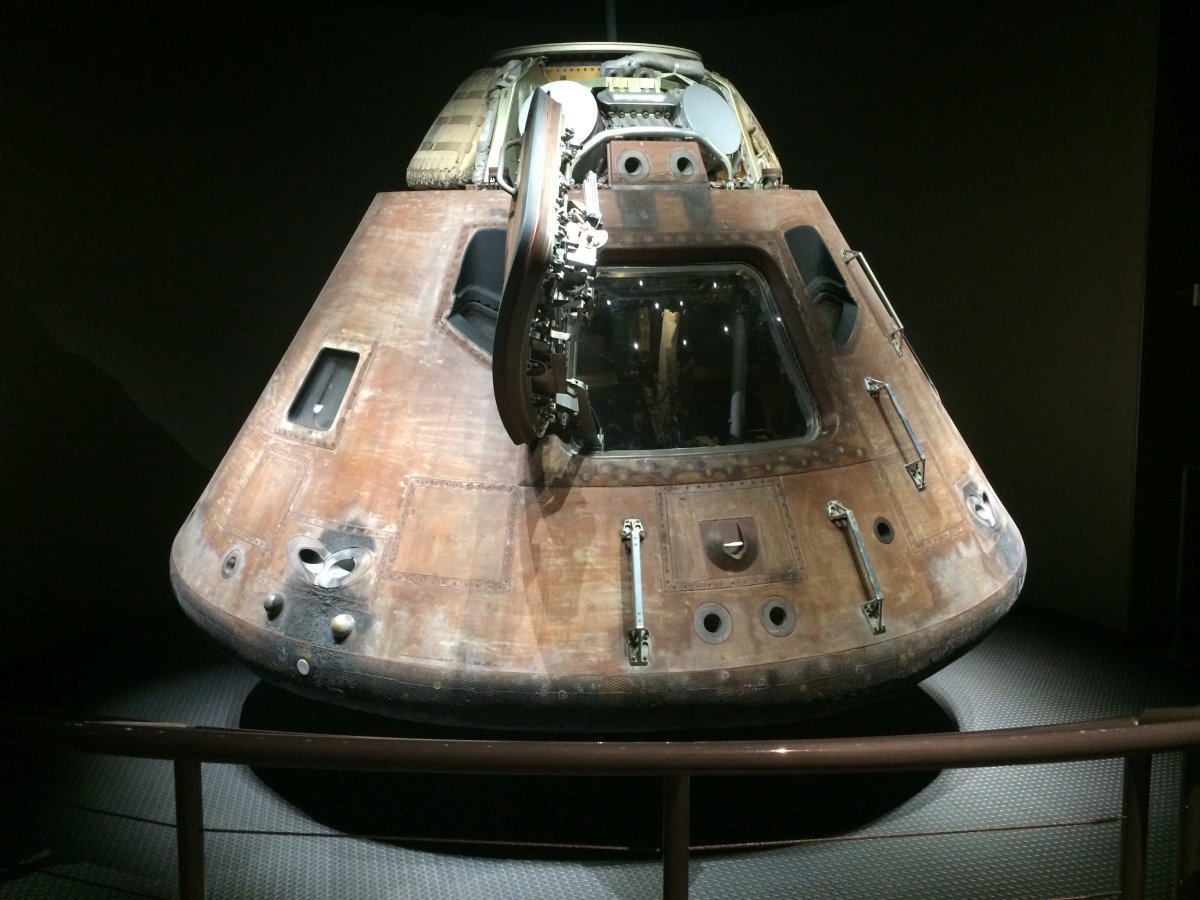 |
|
| We had lunch at the Moon Rock cafe which was surprisingly good for museum food. Bruce and I even enjoyed cold beers. |
| |
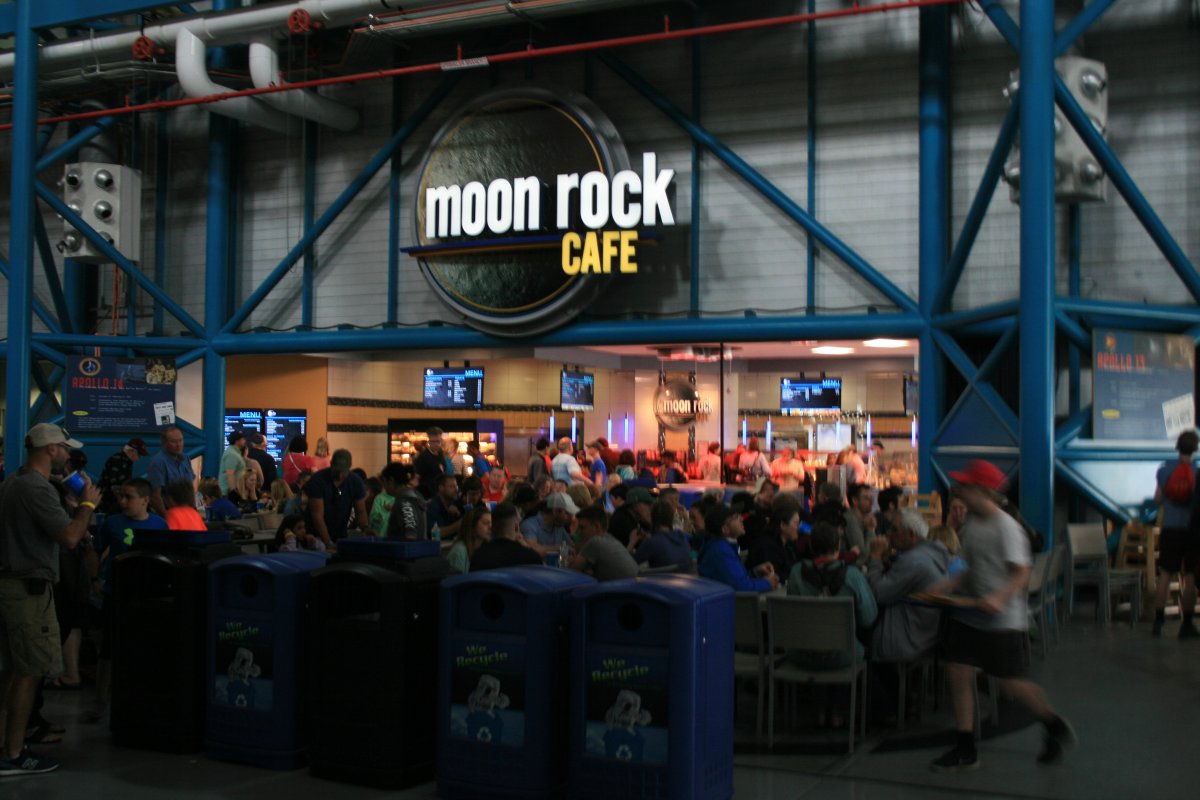 |
|
| The shuttle bus took us back to the Visitor's Complex and we checked out the Space Shuttle Atlantis building. |
| |
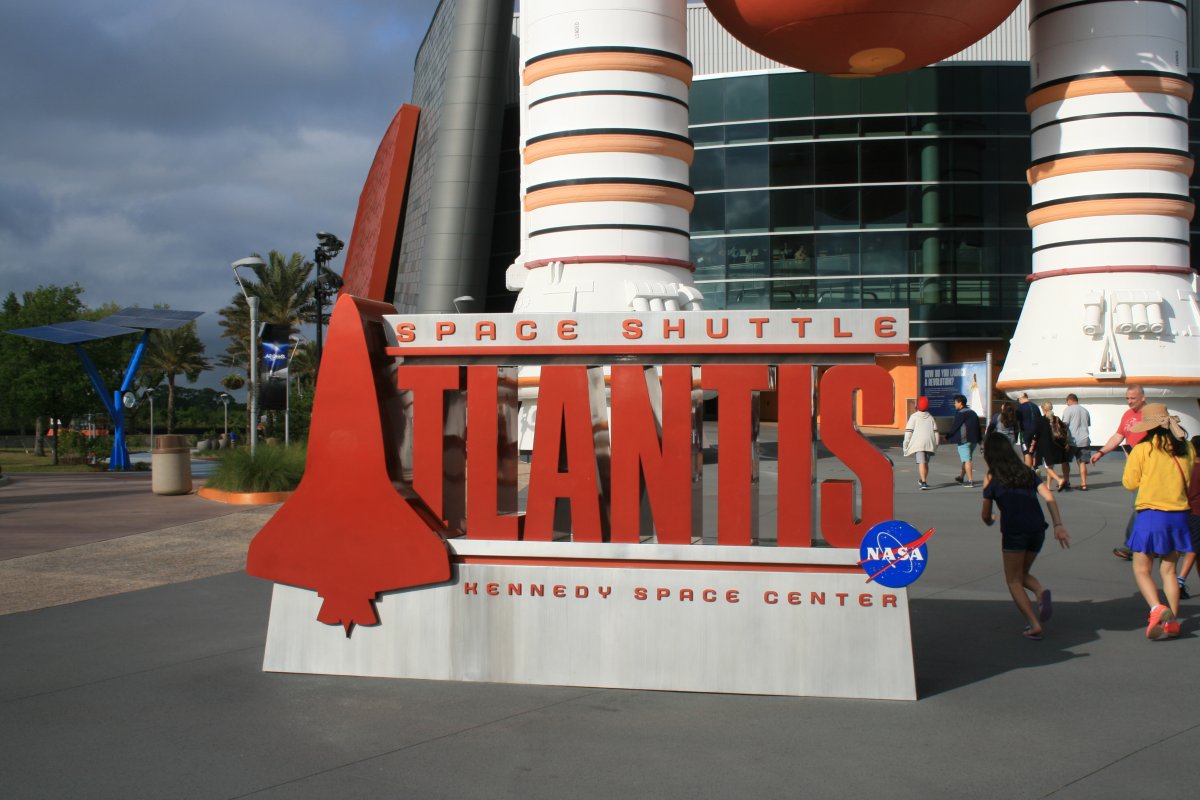 |
|
|
It was fairly easy to find with the massive full-size replicas of the two solid rocket boosters and main external fuel tank sitting out front.
|
| |
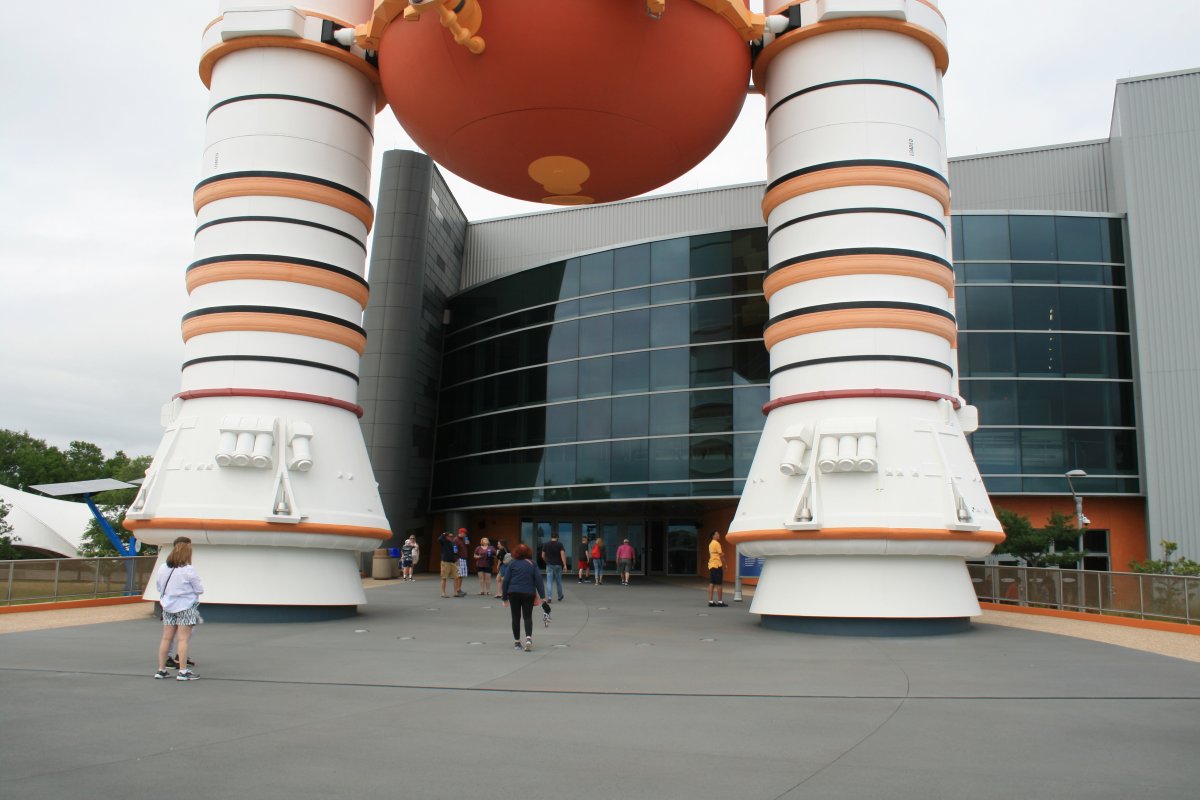 |
|
| Wow. |
| |
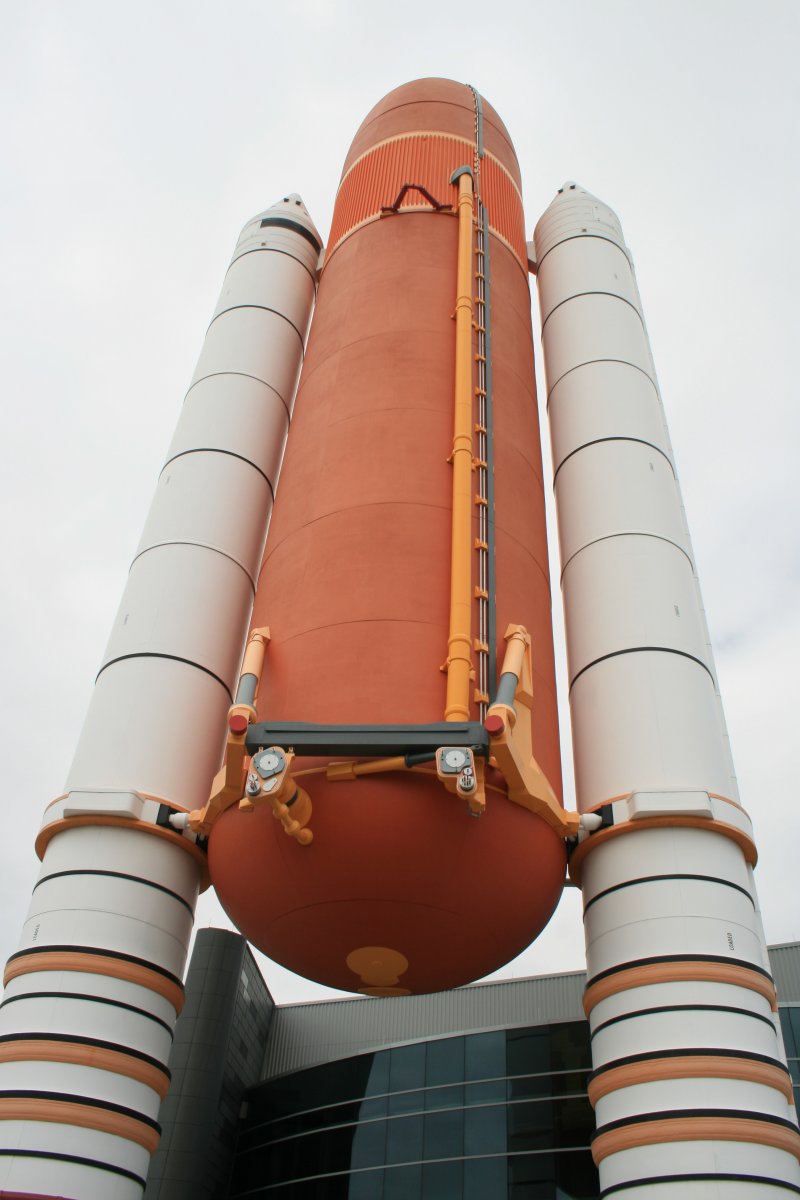 |
|
| You see an interesting movie when you enter the building, and then it opens up to this. The Space Shuttle Atlantis -- veteran of 33 space flights -- looking like it is actually orbiting through space. The payload bay doors are open and the "arm" is extended. |
| |
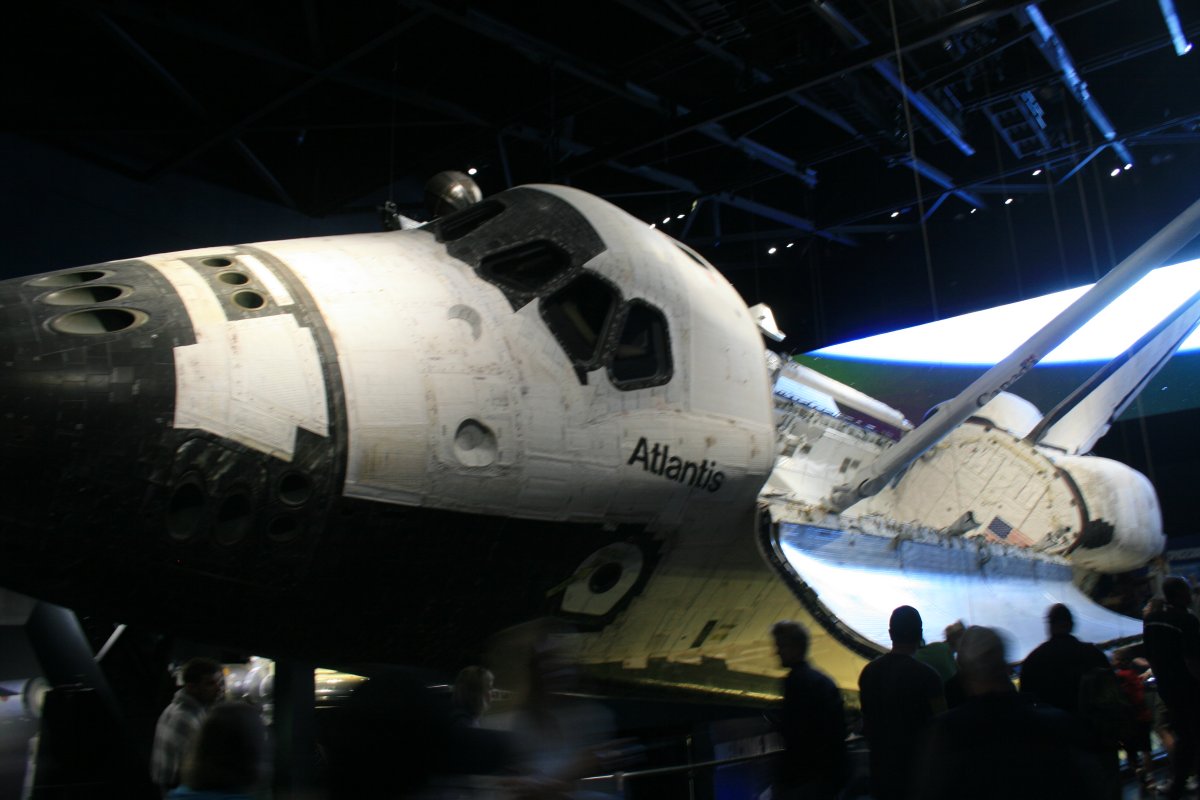 |
|
| |
|
|
| |
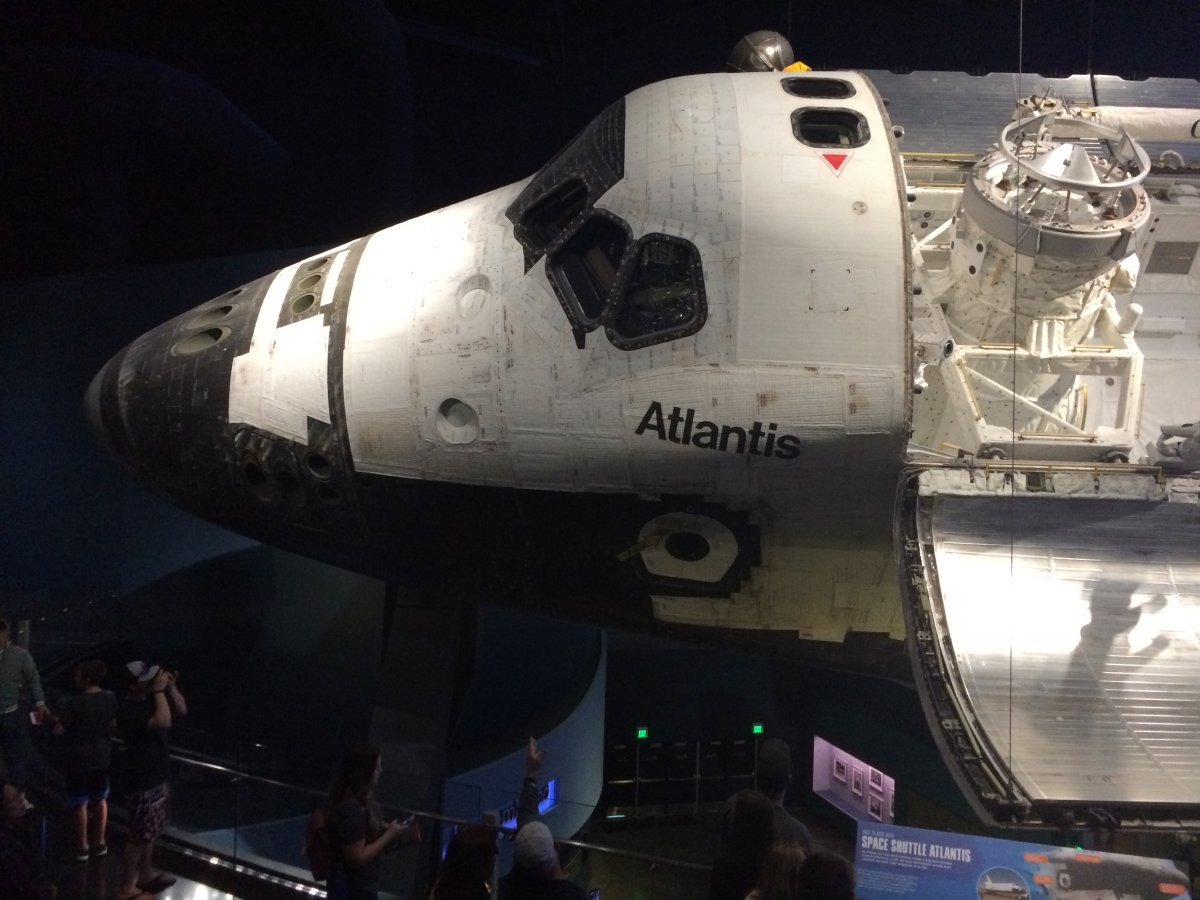 |
|
| |
| |
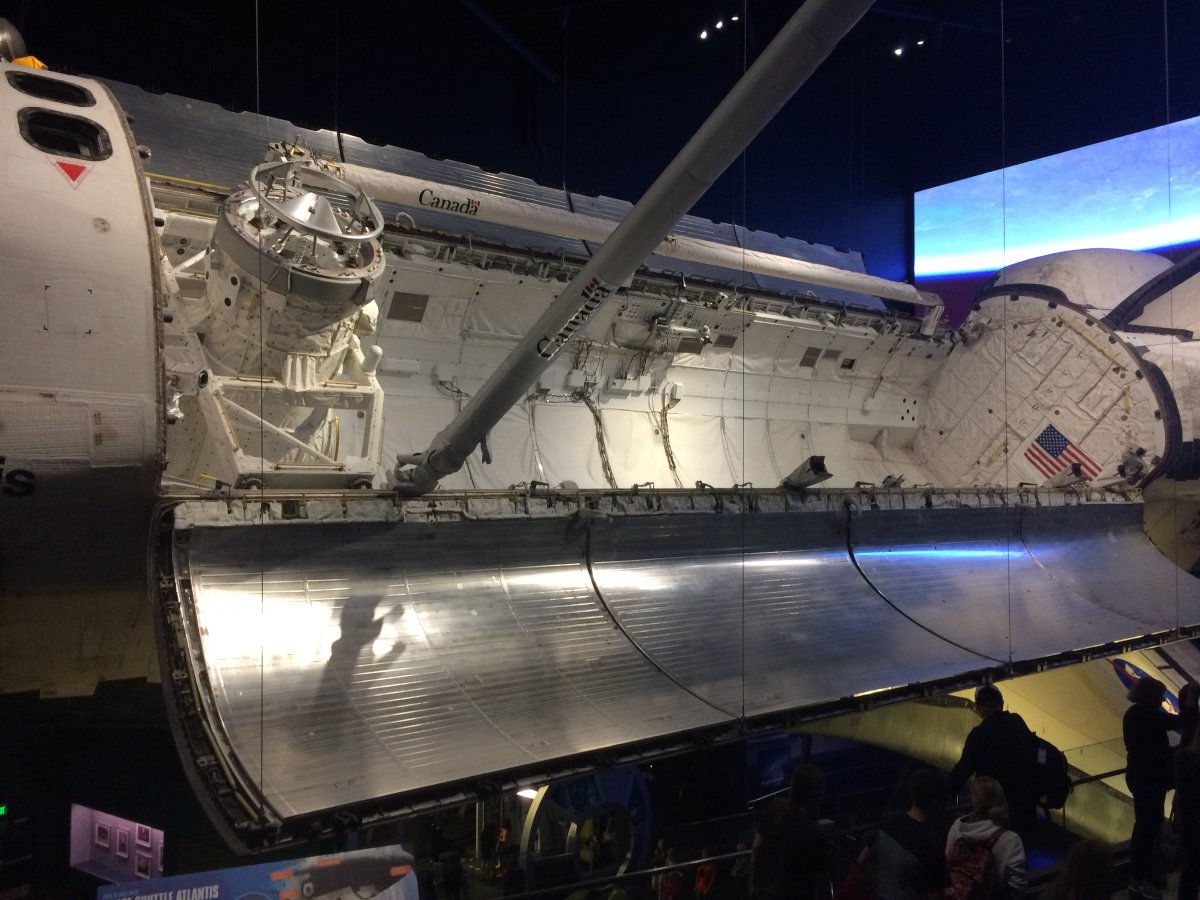 |
|
|
A full-scale replica of the Hubble Space Telescope hung overhead.
|
| |
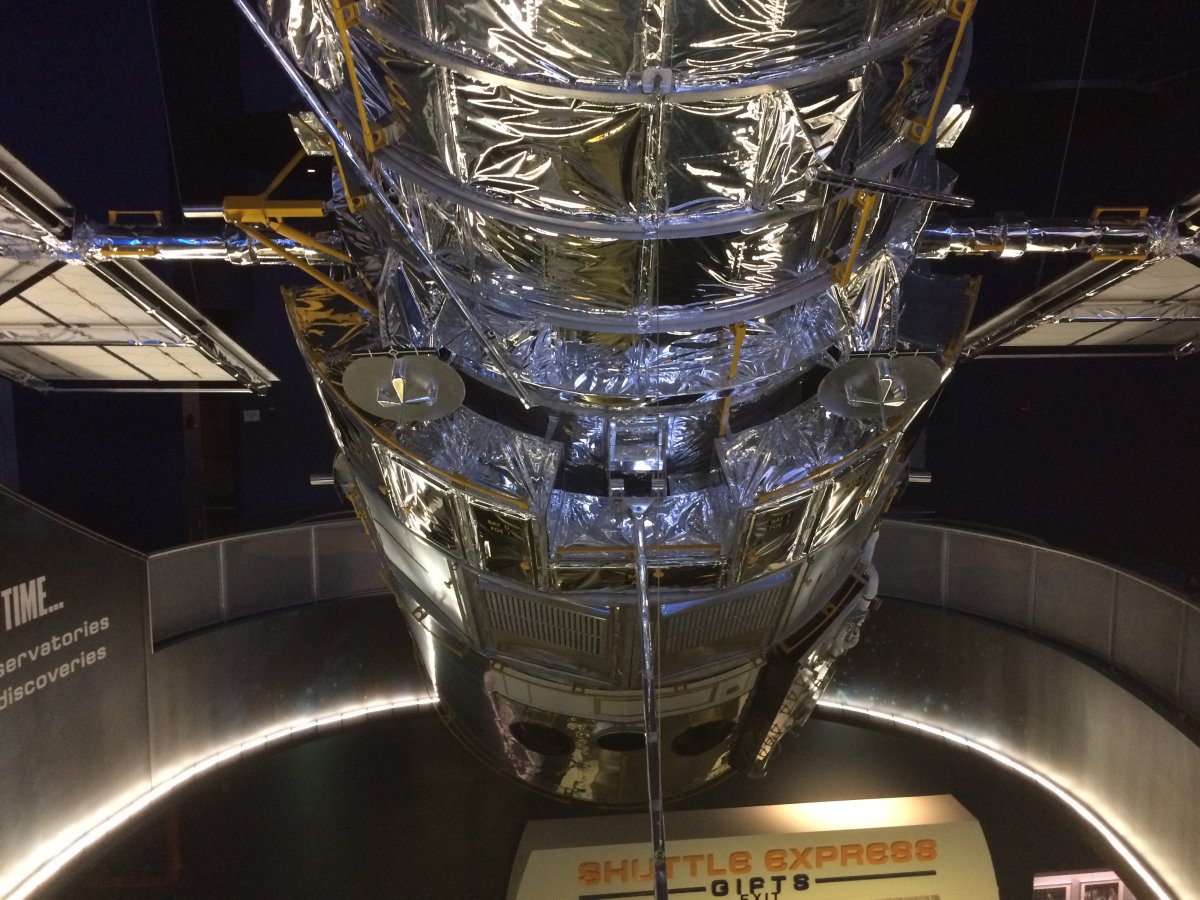 |
|
| With an astronaut hovering nearby... |
| |
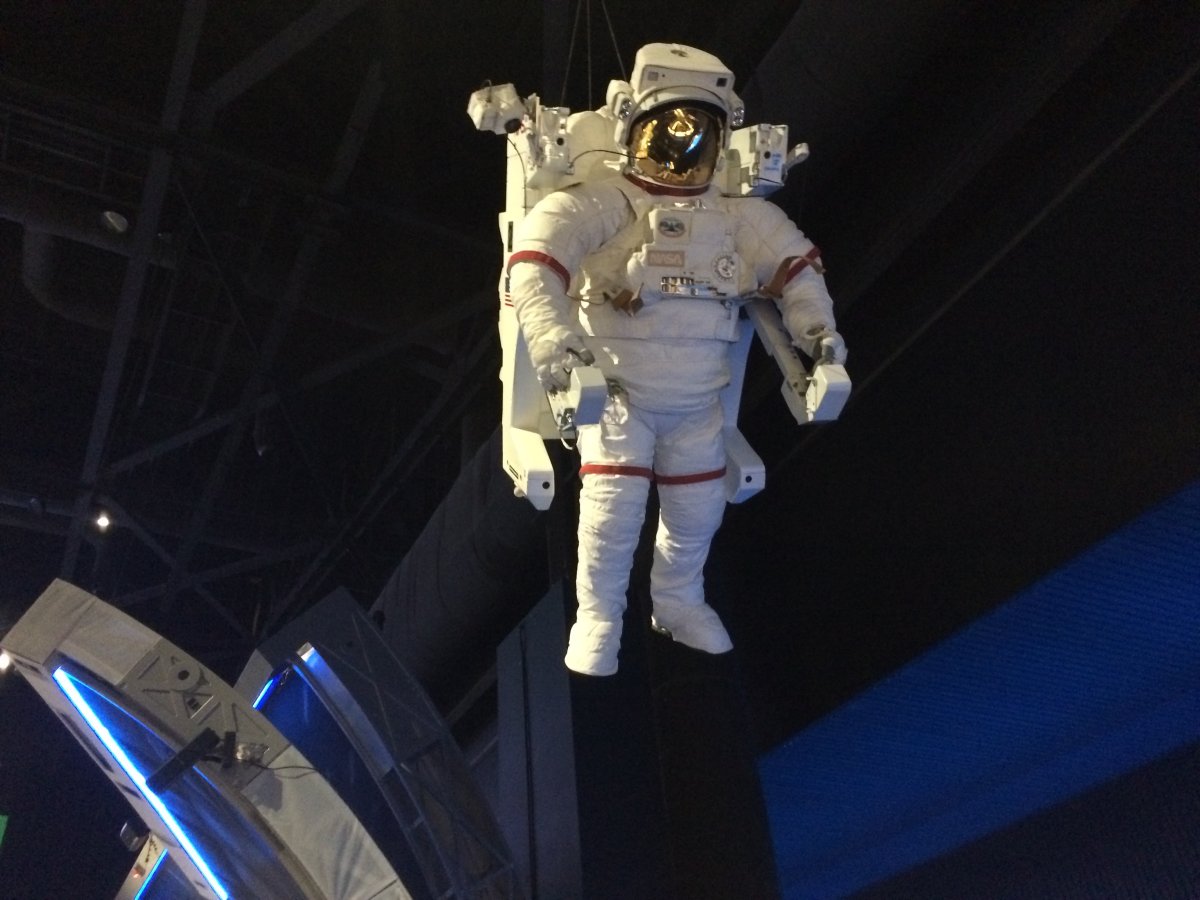 |
|
| Lynnette flying the Atlantis down to landing! |
| |
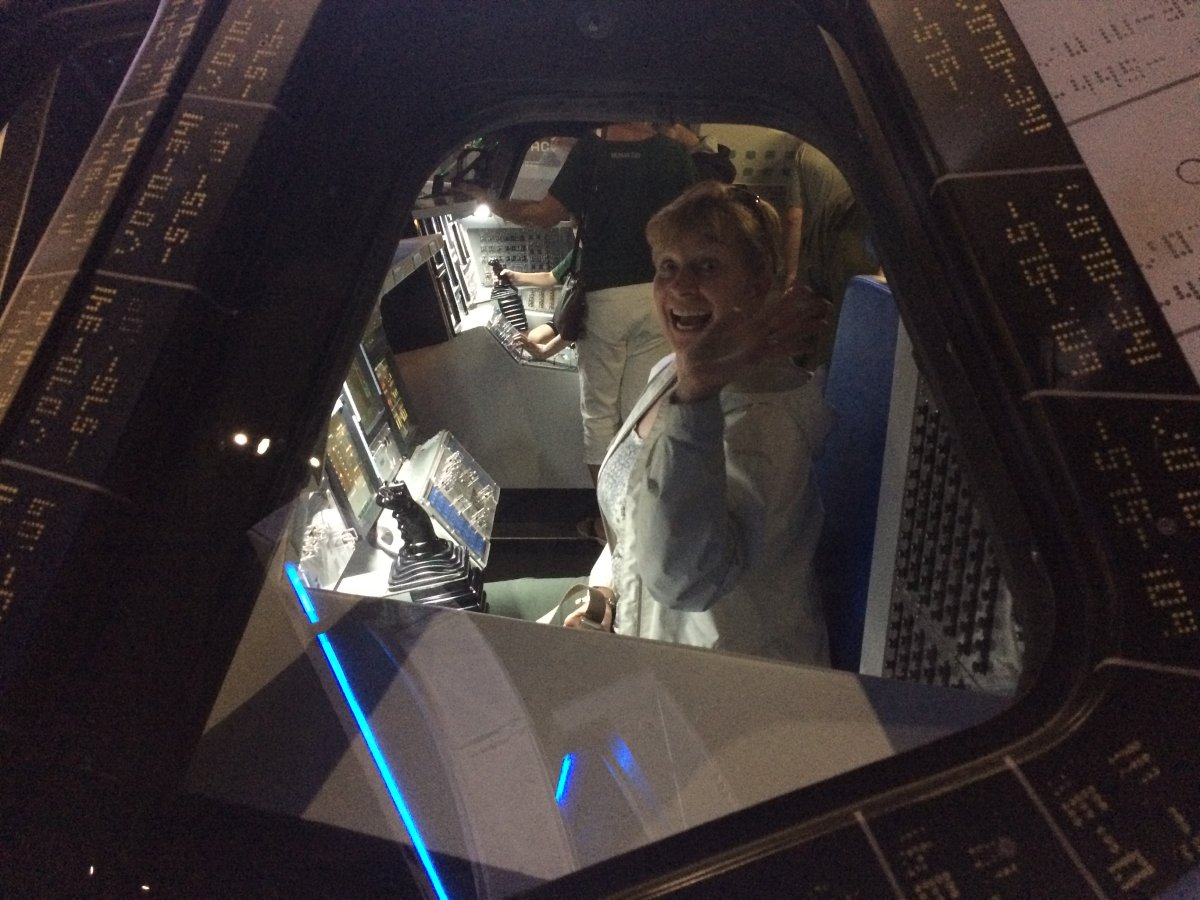 |
|
| |
|
|
| |
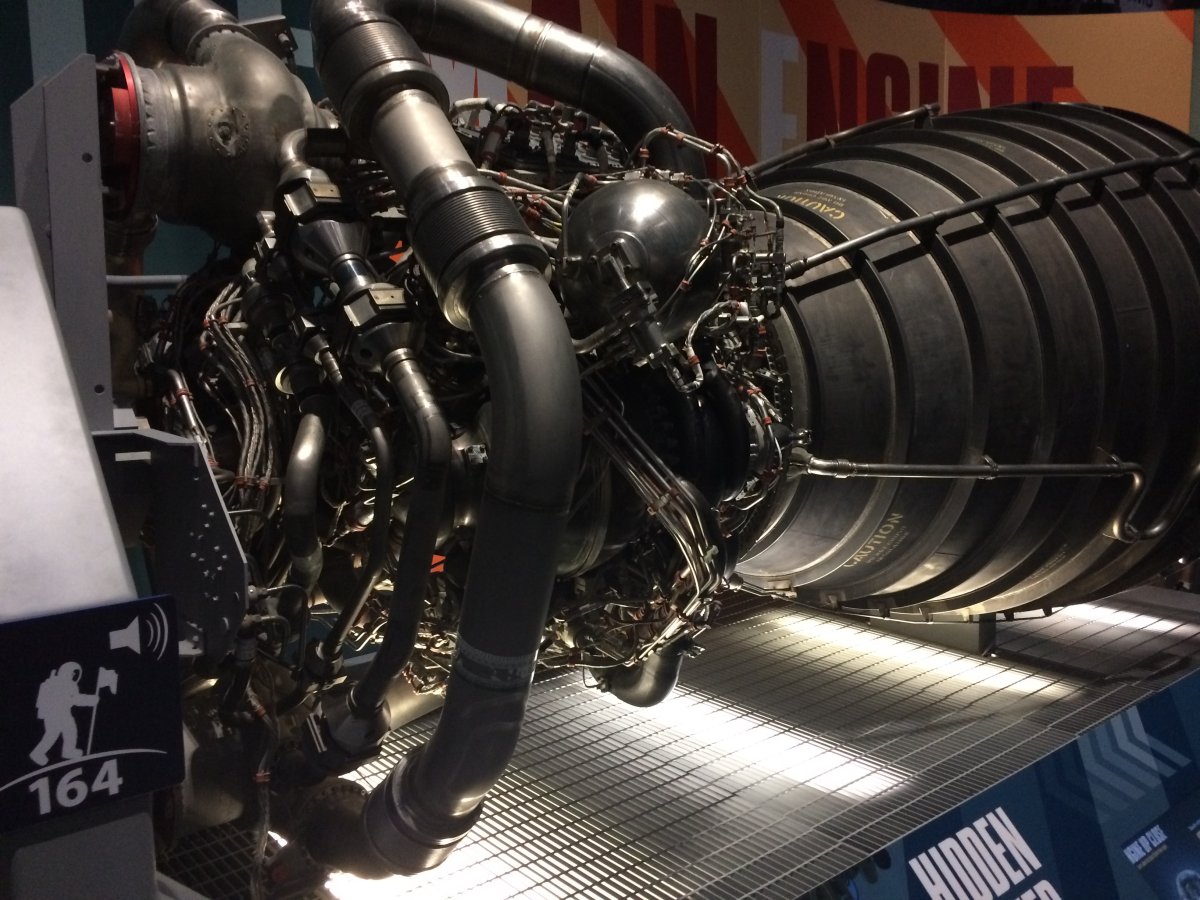 |
|
| And there they are! |
| |
 |
|
|
The Atlantis is positioned at an angle of 43.21 degrees, with gear up, as she would be in orbit.
|
| |
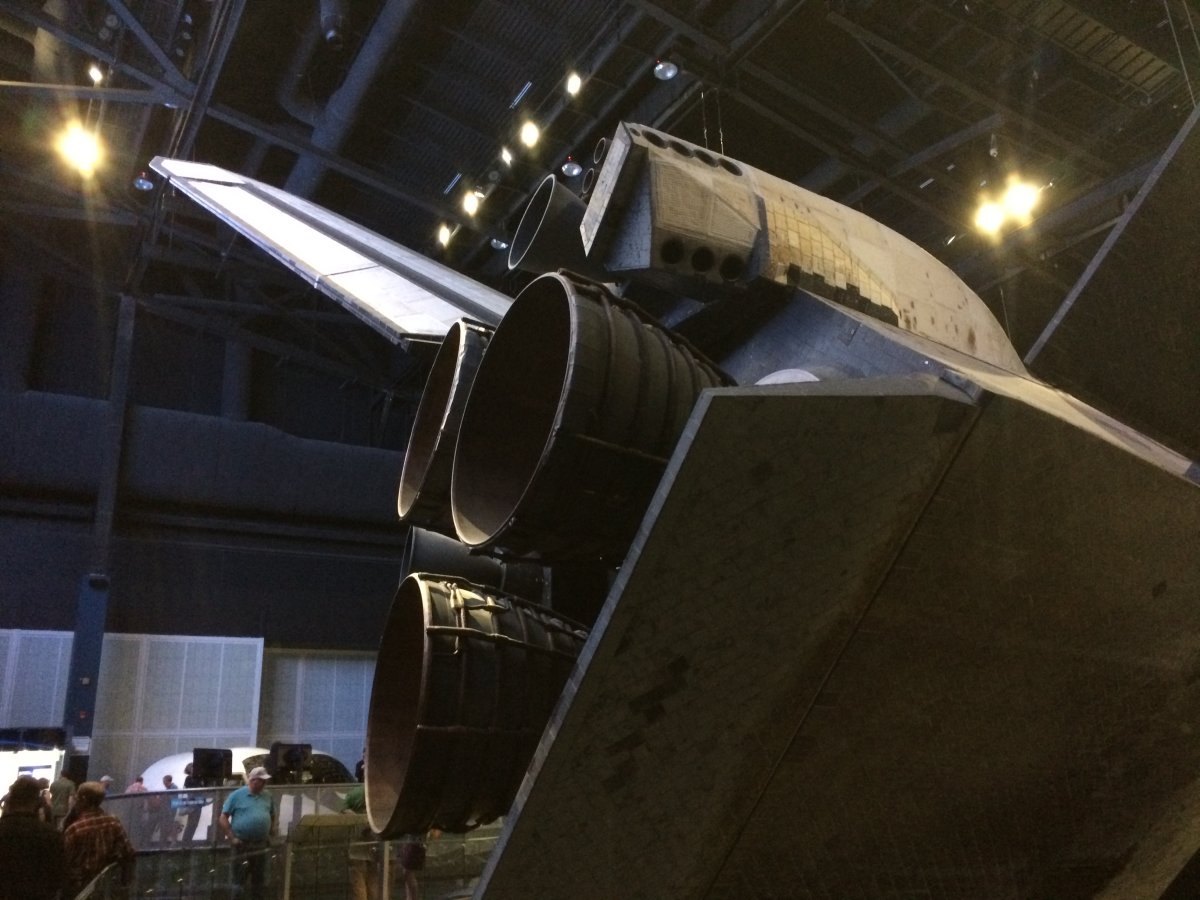 |
|
|
We went on the Shuttle Launch Experience which was fun and well done.
They also had a memorial to the astronauts lost in the Challenger and Columbia accidents. Personal items from each astronaut's life were displayed. One was this Cox PT-19 U-control plane that I also had as a kid. It brought back memories.
|
| |
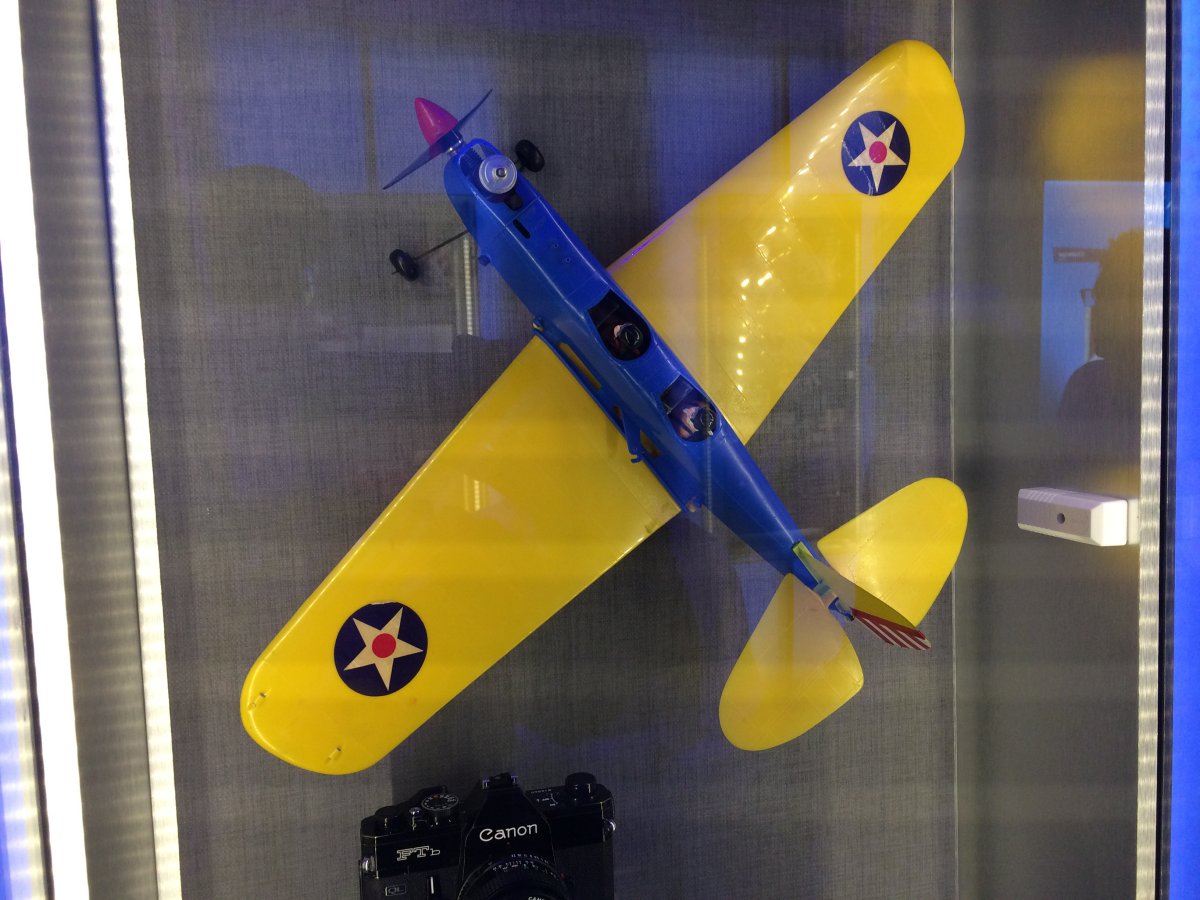 |
|
|
We were able to catch an IMAX movie Journey to Space in 3D. But we ran out of time and did not get to see the Heroes & Legends Building which has a lot of Mercury and Gemini stuff. Plus we missed the NASA Now exhibit which covers NASA's current plans to use the Space Launch System (SLS) to take America back to the Moon, and Mars. Plus some other stuff.
So, to summarize, I'd highly recommend the Kennedy Space Center. It's world-class. But it takes two full days to see everything. And again, I'd buy the tickets online so you don't have to wait in line to buy them there. Plus I'd get there right when it opens to try and beat the crowds.
|
| |
 |
|
| |
| |
| |
|
|
|
|
|
|














































